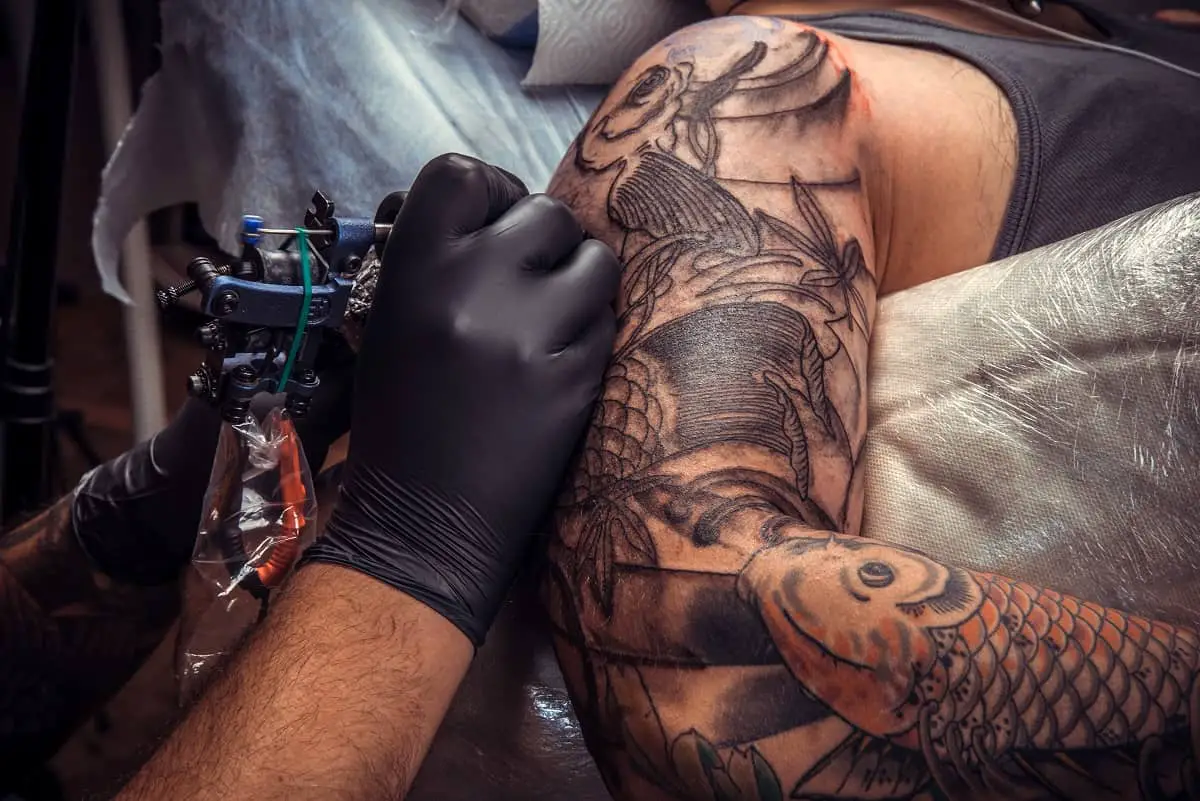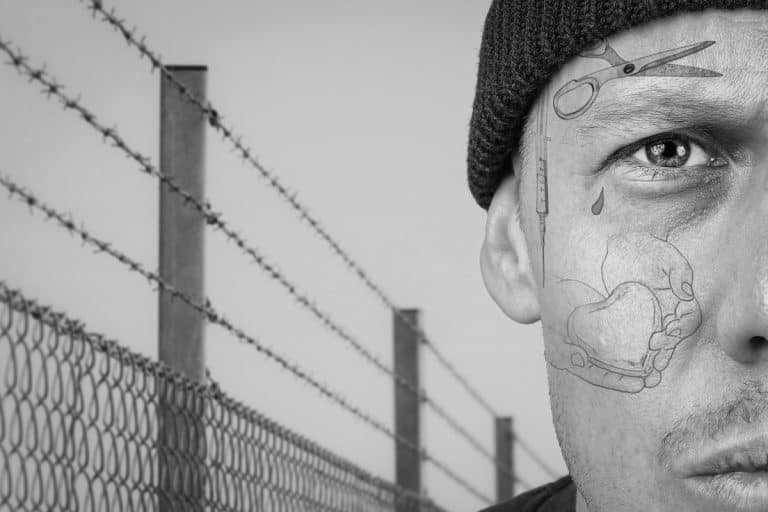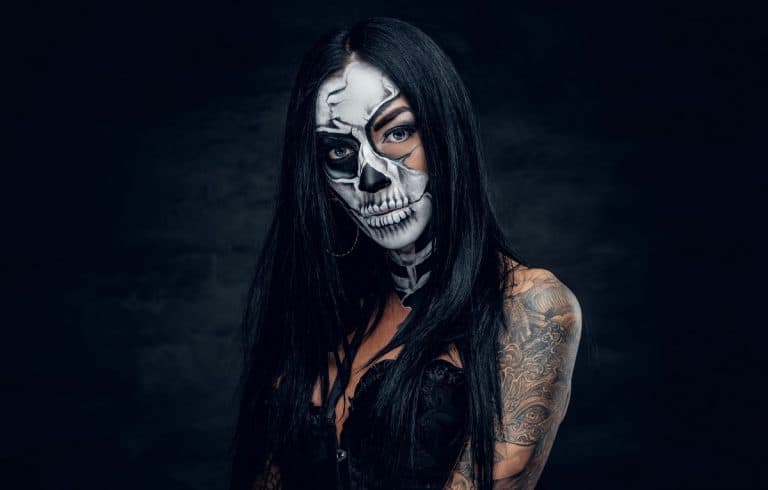A Comprehensive Tattoo Guide For Beginners (Pain, Placement, Sizing, Price, Aftercare, Removal)
A tattoo can mean a lot – or it can mean nothing at all. Besides being deeply personal, tattoos are extraordinary works of art and have some interesting history behind them. In this ultimate tattoo guide, we’re introducing you to the entire concept. From the basics of tattooing, to tattoo designs, to tattoo removal.
Whether you’re thinking about getting a tattoo, are worried about the pain, or are just curious about body art, you’ll find the answers you seek here. Don’t forget to check out temporary tattoos near the end of our guide too!
Tattoo: Quick Basics
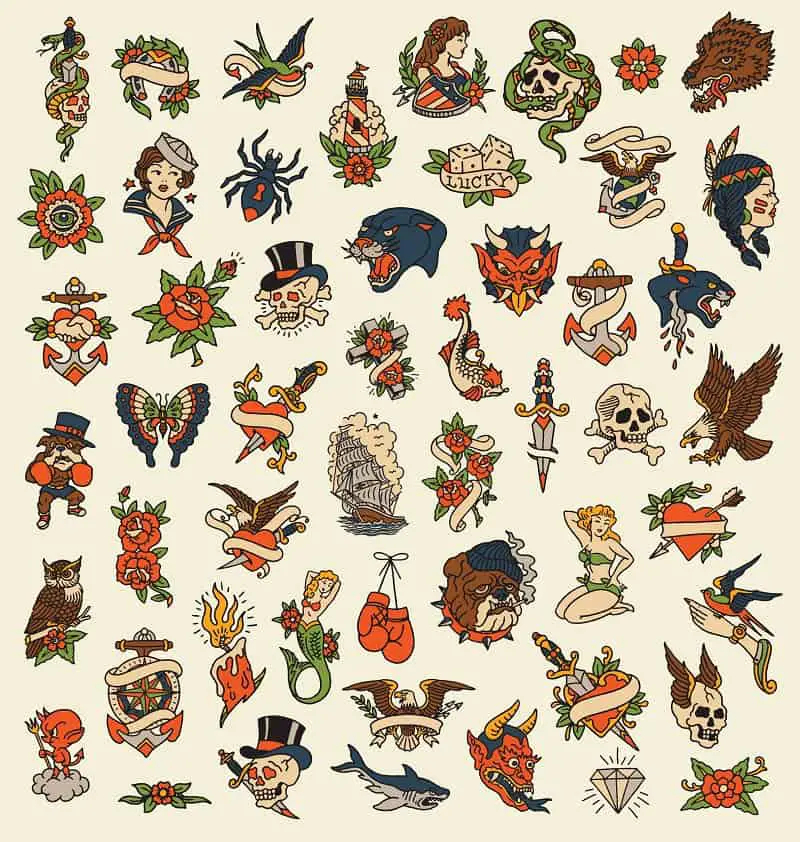
There are no stupid questions. Just to make sure we are all on the same page, here are the basics of tattoos.
What is a Tattoo?
A tattoo is permanent body art. Ink in a variety of colors is injected into your skin to create artwork. There are endless tattoo designs to get, with numerous styles. A person who designs and “inks” tattoos is known as a tattoo artist.
A good tattoo won’t always be cheap. You should be prepared to spend some significant time perfecting your tattoo design and finding a compatible tattoo artist for your tatt. This is especially important for large and complex designs.
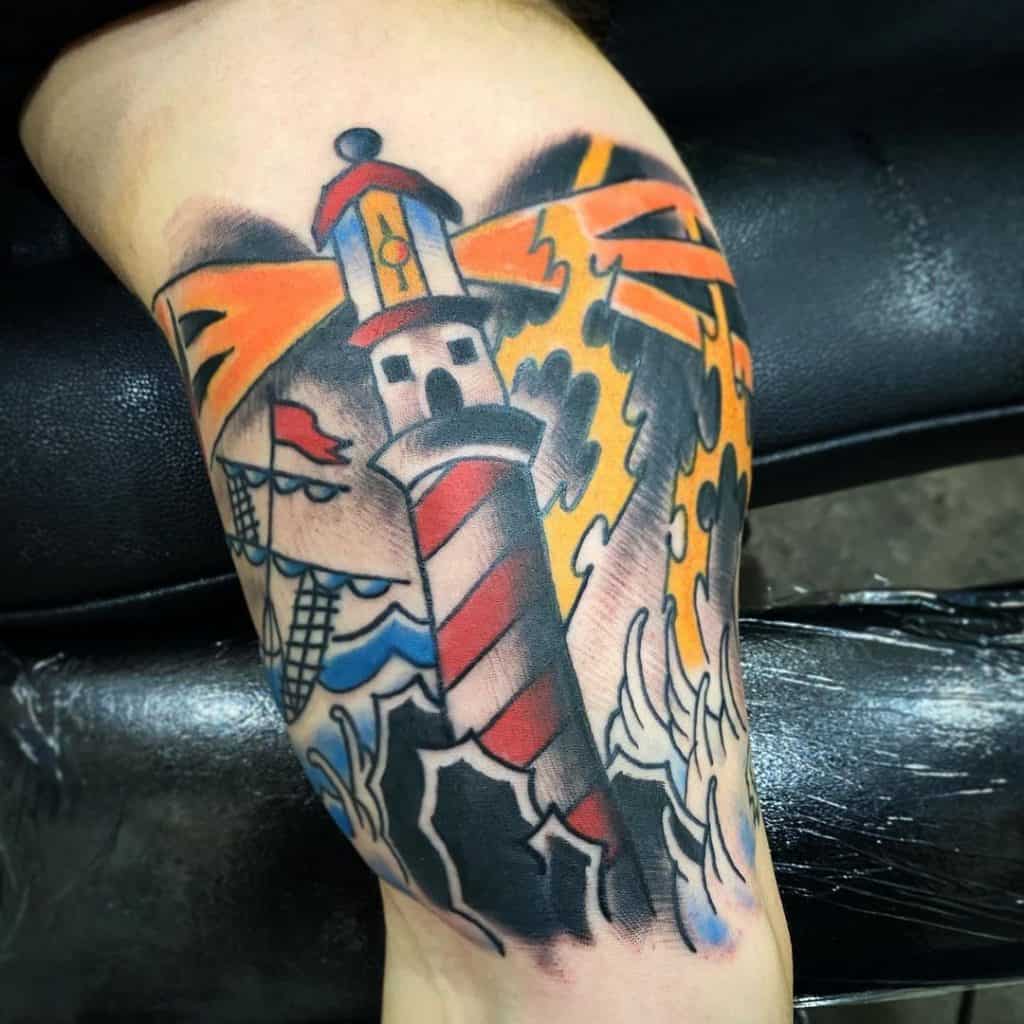
Above all, you need to remember that tattoos are permanent (more on the expensive and painful process of tattoo removal below) so it had better be a design that you’ll love forever!
Tattoos can also be extremely meaningful. Symbols and designs can hold significant meanings for an individual. A tattoo can simply be for decoration, or it can be to honor, commemorate or signify something else.
Read More:
How Tattoos Are Made
Put simply, tattoos are made by injecting ink into your skin using a needle.
We won’t lie to you – it can hurt like a b**ch.
Here’s a video showing you how it works:
To summarize:
- Your skin is cleaned and sterilized,
- New, sterilized needles and equipment is set up,
- A tattoo “gun” rapidly fires a needle into your skin,
- The needle deposits ink into the dermis layer,
- Your skin heals and the tattoo design shows through.
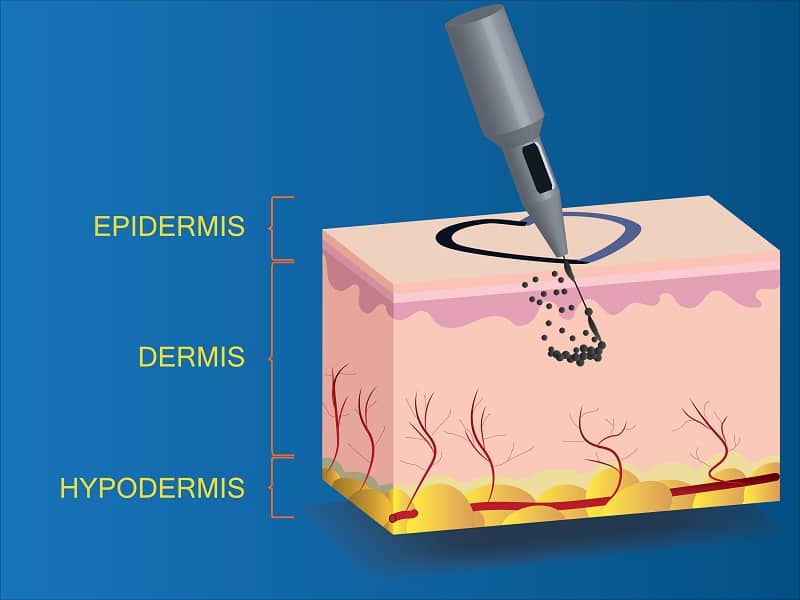
For a full explanation of the healing process (plus a list of all the signs of a tattoo infection) check out How Long Does It Take for A Tattoo To Heal: Step by Step Guide.
How to Decide on a Tattoo
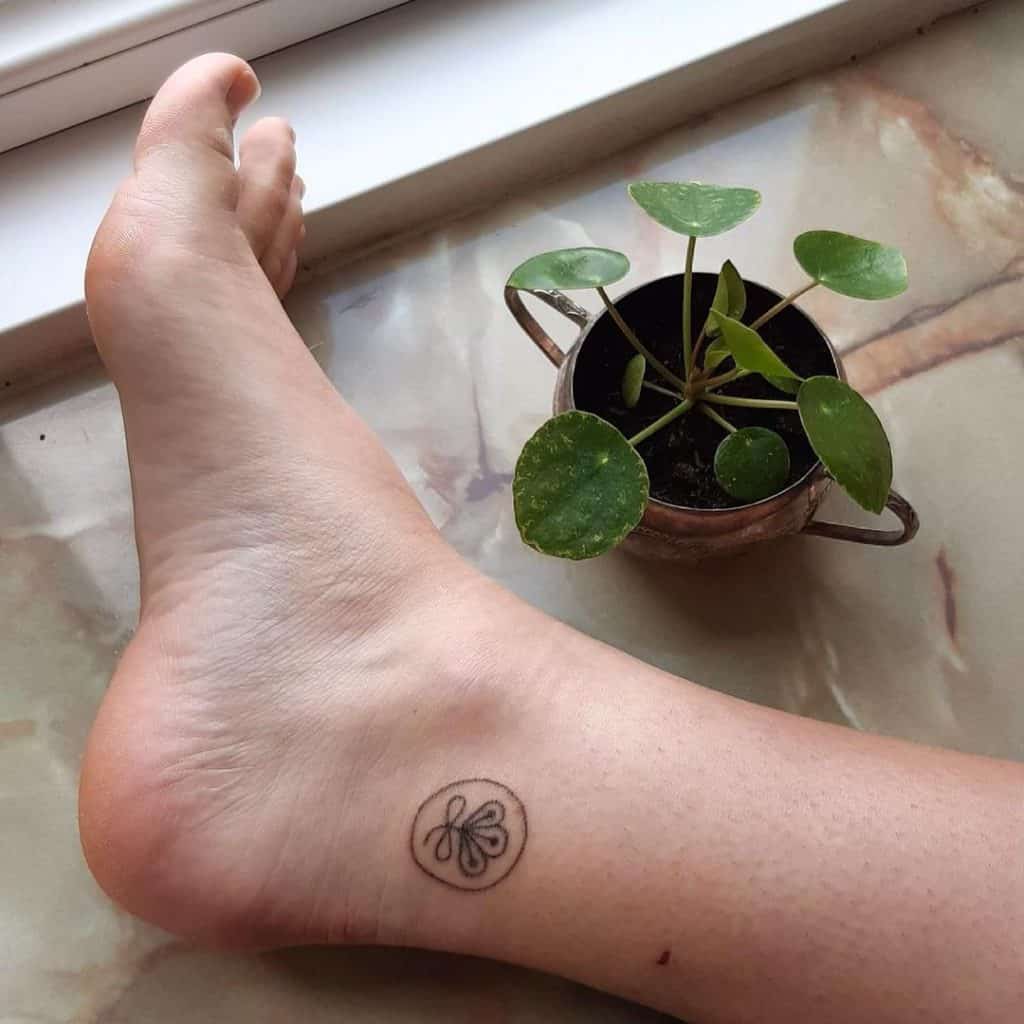
First things first, it has to be your decision. Your friends might have some strong ideas and your tattoo artist will have some advice as well. While it’s a good idea to listen to them, ultimately it has to be your choice. If you don’t like the tattoo ideas of your artist, you should say something.
It’s you that has to live with it!
Other things to consider when you’re deciding on a tattoo:
- Pain tolerance – larger tattoos will hurt for longer and take longer. Placement matters a lot when it comes to pain.
- Public vs private – do you want people to see your tattoo or not?
- Meaning – what does your tattoo represent? A tattoo artist may have some ideas to help symbolize your thoughts.
- Style – from minimalist to traditional American style, there are plenty to choose from. You need to decide this first of all, so you can find a tattoo artist that is competent in the style you want.
Read our 101 Guide to Getting a Tattoo to learn more.
You can also check out: 14 Places To Hide Tattoo From Your Parents
Tattoo History: For the Nerds
Not only is tattoo history very interesting, but it can also be a great source of inspiration. If you are looking for a classic tattoo design idea, this is the place to find it.
Where Tattoos Began
The answer is everywhere! There’s no single origin of the tattoo. Historians have shown that native tribes around the world have been permanently decorating their skin for centuries. The earliest records of tattoos date back to 5000 BCE, according to some sources.
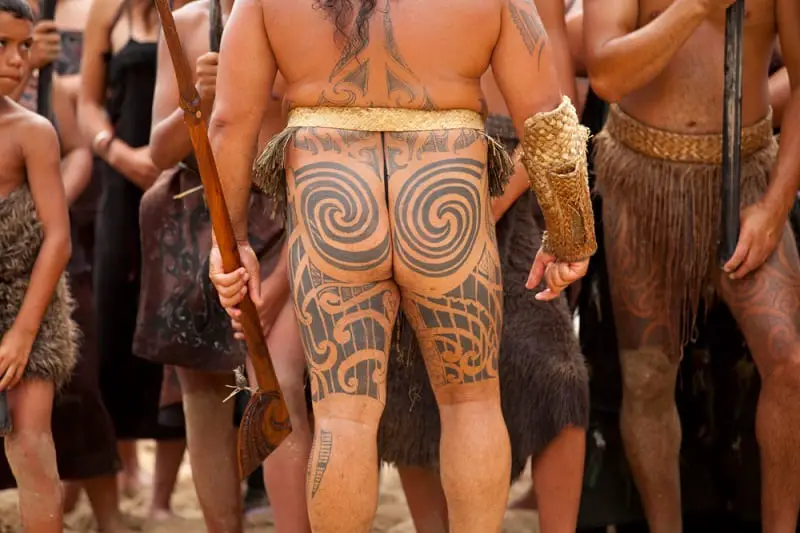
Originally, tattoos were made by scarring the skin and then discoloring the scar. This could be through dyes like earth and herbs, or other means.
The meaning and purpose of tattoos is harder to decipher. It could be part of a ritual or sacrifice. One thing is clear: a tattoo is a way of expressing an individual identity. That concept of expressing yourself through body art is still going strong today!
Evolution of Tattoo Style
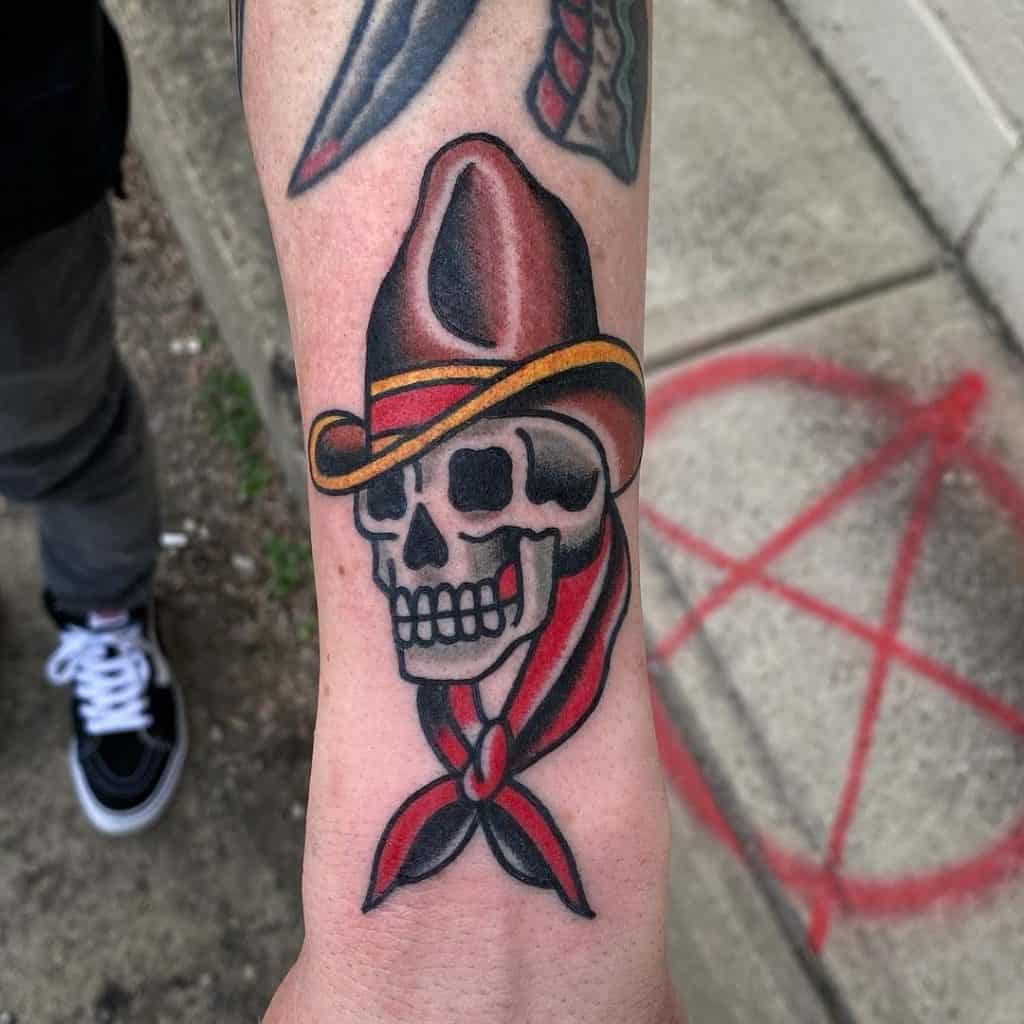
Tattoo styles grow and change, but there are some that have transpired decades. Tribal tattoos, for example, still hold significant meanings and the style of tribal tattoos is still popular today. Check out a list of the most popular tattoo design ideas this year below.
Nowadays, regardless of the style of tatt, you always start with an outline. A template is made that’s then applied to your skin, kind of like guidelines.
Here you can see the work in progress. Half of this watercolor tattoo has been completed, while the other half remains an empty outline. This is where the template was applied, then lining was tattooed over it, and finally the tattoo artist is in the process of coloring it.
The more complex and larger the design, the longer the style will take to tattoo. Usually, a large tattoo will be split over multiple session.
Current Tattoo Practices
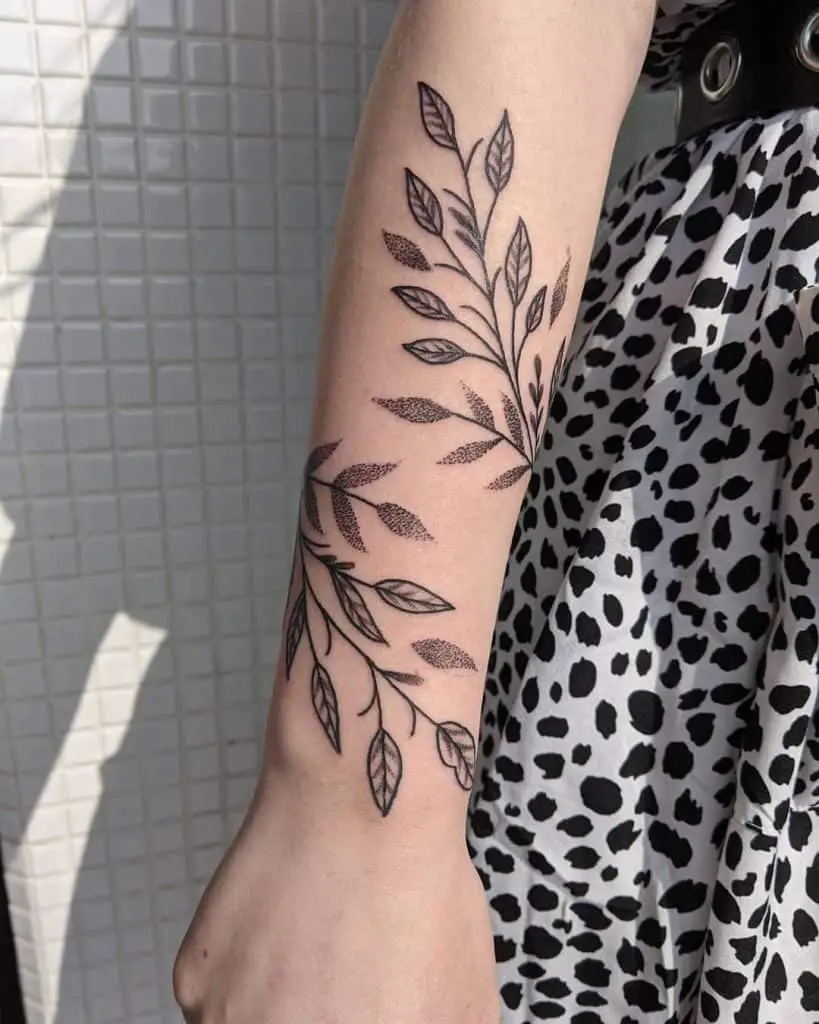
Typically, a tattoo is comprised of three different techniques.
Lining – this is the outlines of the tattoo. Bold, solid lines that create the image. Some tattoos are just lines, like words or quote tattoos. Most image tattoos are a combination of lines with added shading and color.
Shading – this technique, along with coloring, is used to fill the tattoo. In this sense, we mean shading as in adding darkness and lightness. Good shading can be the difference between a tattoo appearing three dimensional and very flat. Of course, sometimes a very flat and cartoon-like tattoo is desirable.
Coloring – add color to your tattoo. This is done after the initial outline and people tend to find that it hurts a lot more than the lining. Typically, the tattoo artist will work from dark to light shades. It’s important that they don’t over-work the tattoo. You can always add more color, but once it’s inked in, you can’t take it away.
Tattoo Design Idea Catalogue
Sometimes you have a fantastic idea for a tattoo, but you aren’t entirely sure how to execute it. Other times, you have no clue where to start. Whichever you are, start by browsing these tattoo design styles.
Some styles are best for certain placements, tattoo sizes, and design ideas. Remember, you’ll need to check your desired tattoo artist can ink you in your chosen style too.
Read More:
Traditional American Tattoo
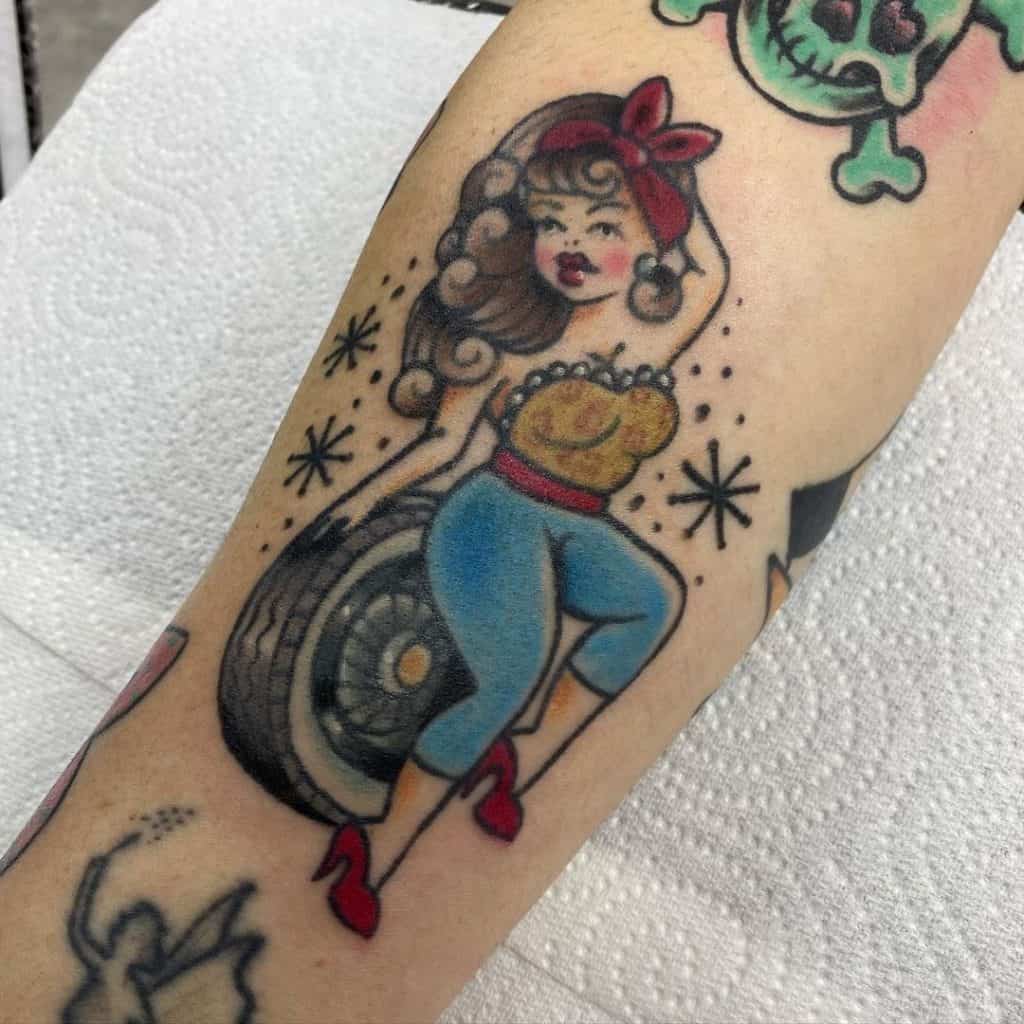
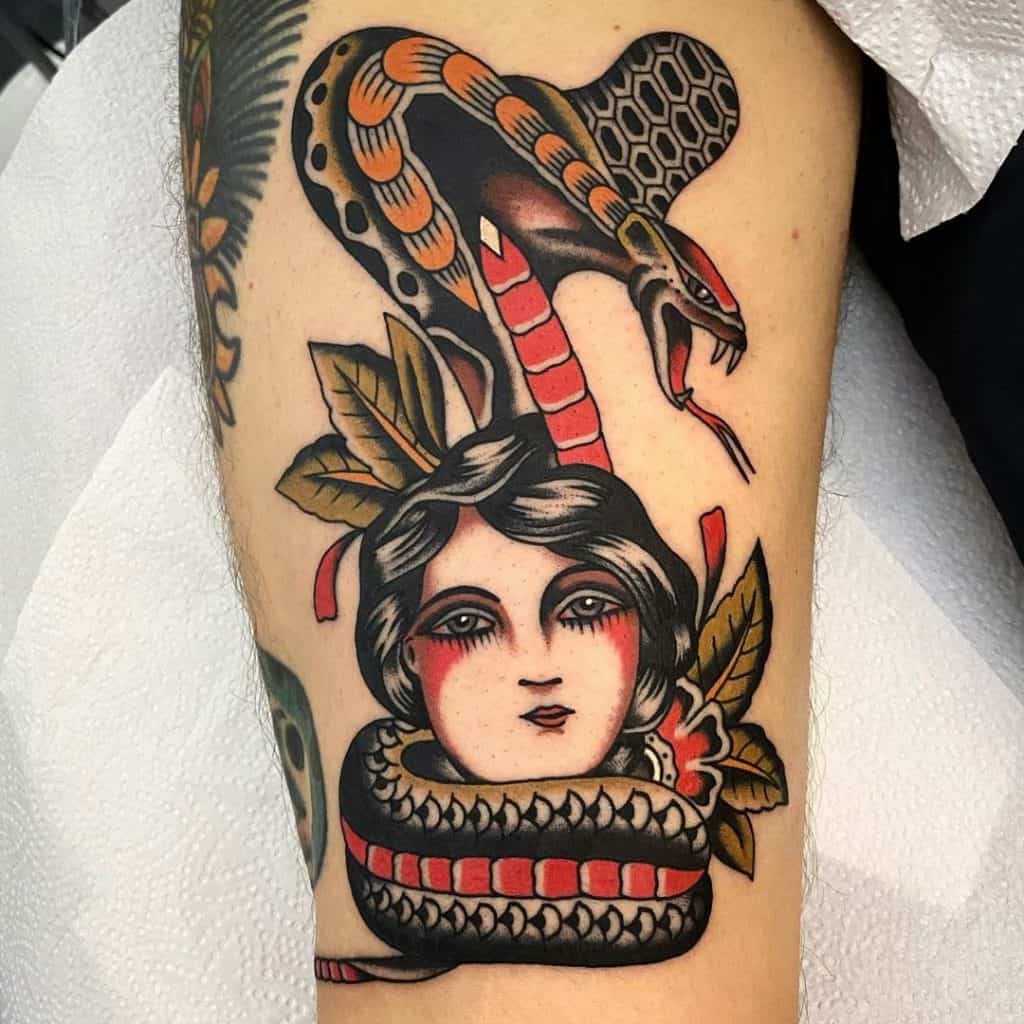
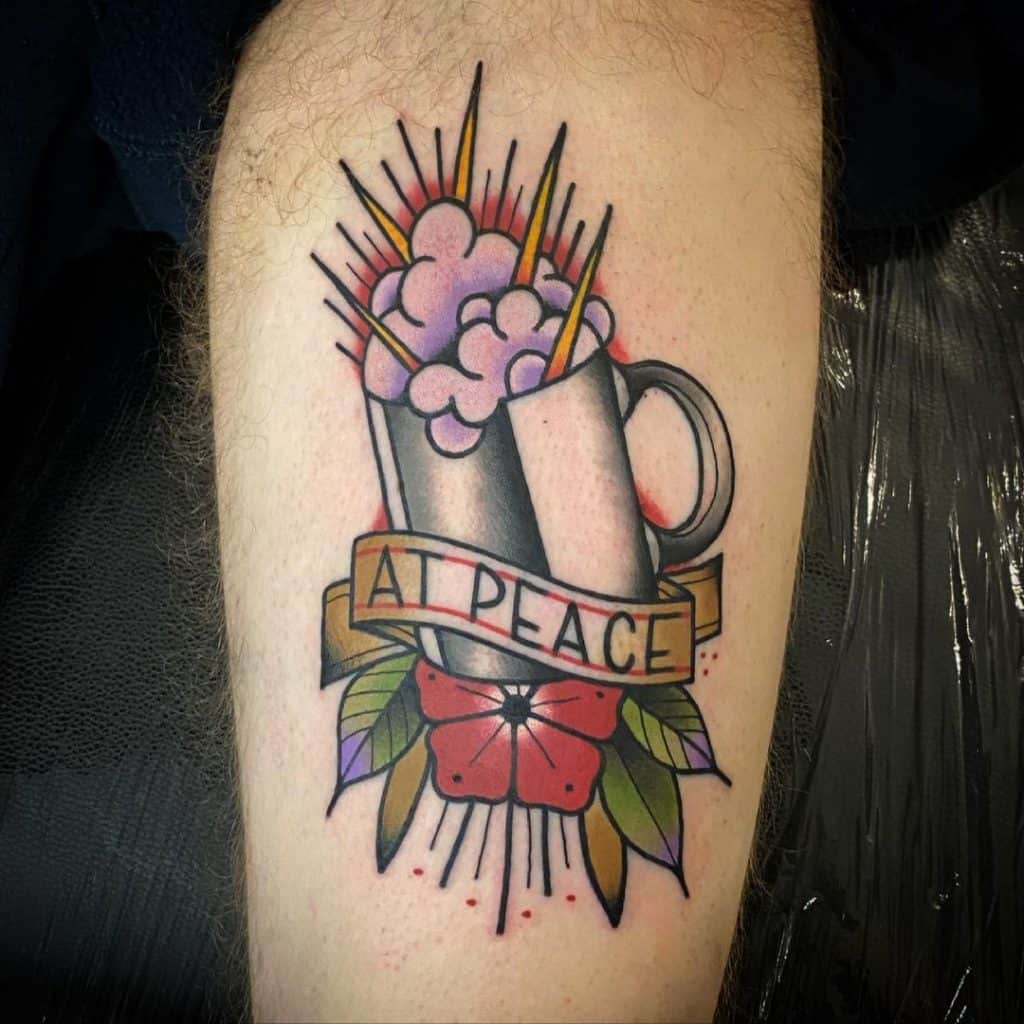
Traditional American tattoos emerged last century, but they’ve certainly made their mark and are still incredibly popular today. Also known as Sailor Jerry tattoos, many tattoos in this style have a nautical theme.
Bold lines, a distinctive cartoon style, and a restricted color palette are all the hallmarks of a traditional American tattoo. These are particularly popular on the forearm, upper arm, and thigh – all good vertical canvases for long tattoo shapes.
Sharks, pin-up girls, ships, snakes, and icons with scrolls showing words in front of them are all popular. Don’t let the cartoon style fool you either – American traditional tattoos have many hidden meanings.
Japanese Traditional Tattoo
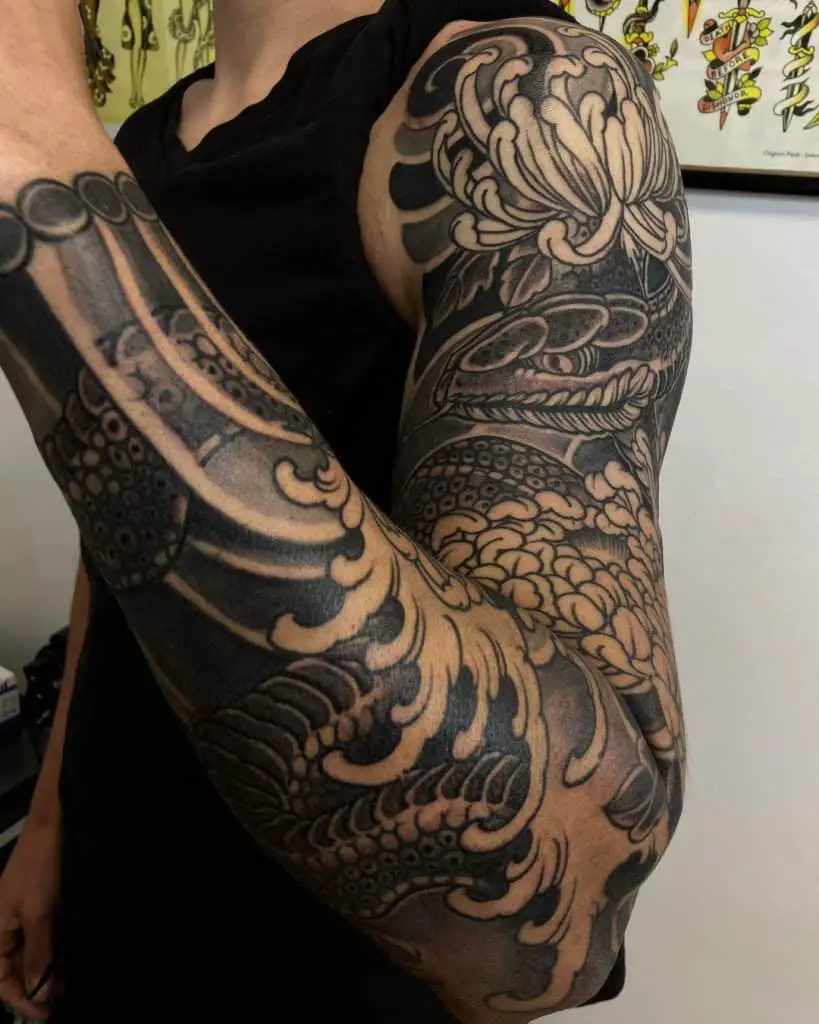
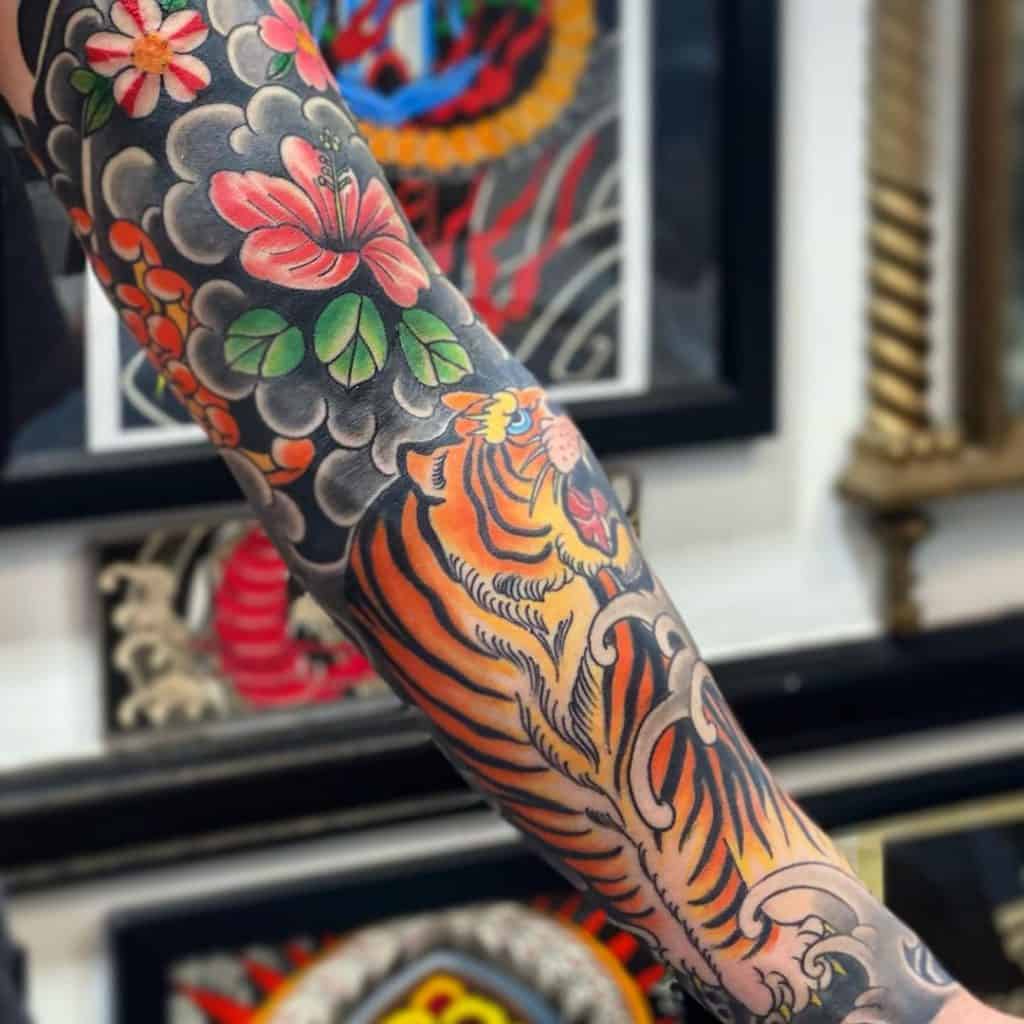
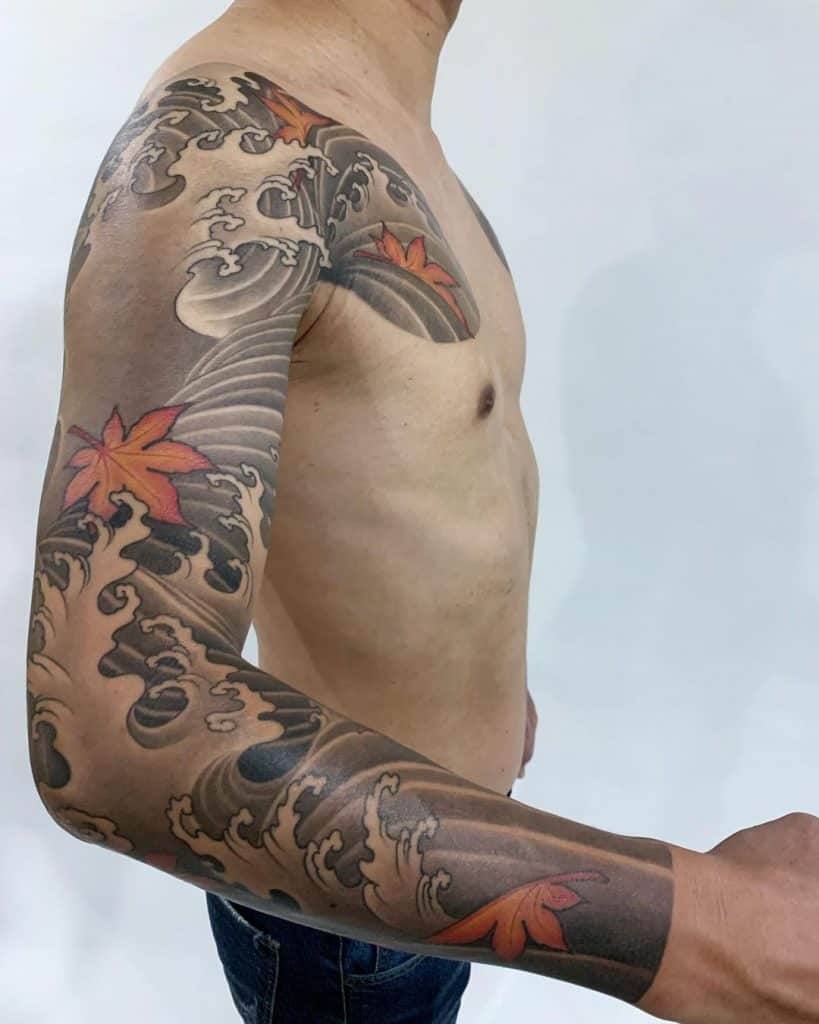
Traditional style Japanese tattoos, although modern, are still drowning in historical meaning and significance. Also known as irezumi, these traditional Japanese tattoos typically show beautiful scenes – a fight scene, samurais, mythic dragons, or just a shallow pond filled with koi.
Japanese traditional tattoos typically wrap around your body completely. There aren’t gaps in a sleeve of Japanese traditional tattoos, in comparison to American traditional tattoos that are full of gaps.
Be brave when you opt for a Japanese traditional tattoo. The level of detail and pure size of the tattoo usually equates to long and painful sessions under the needle.
Neo-Traditional
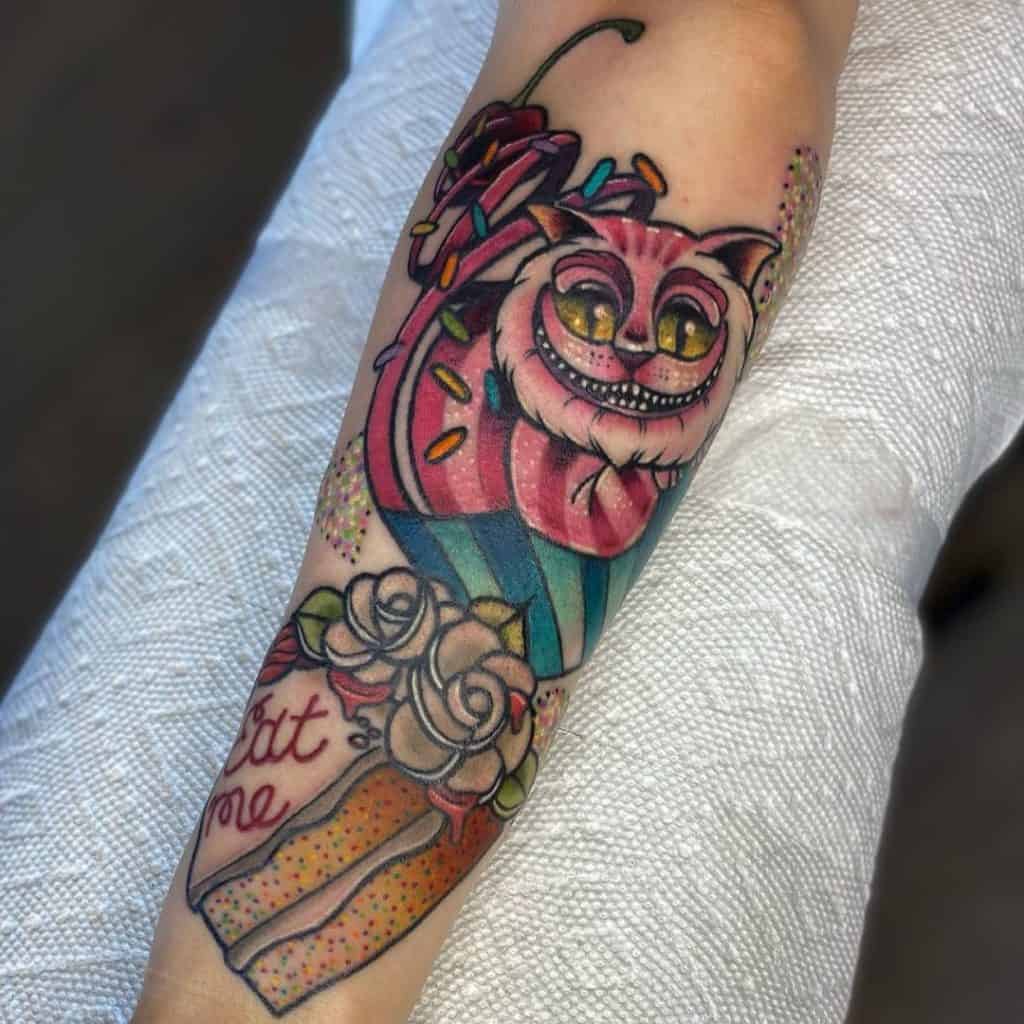
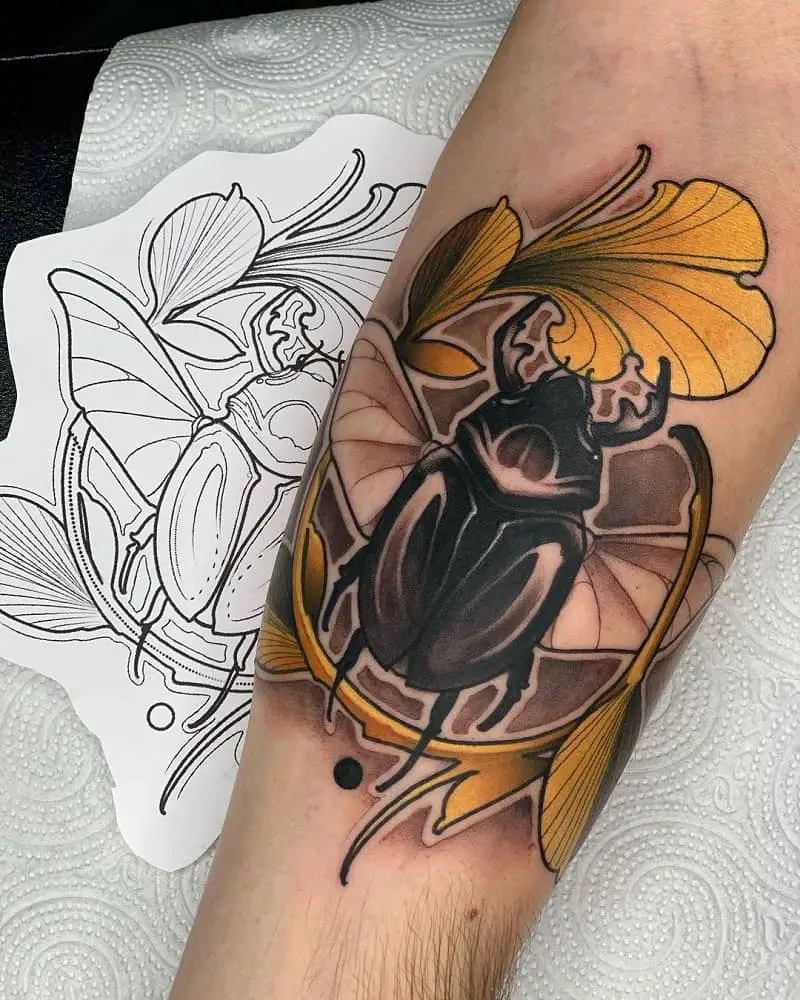
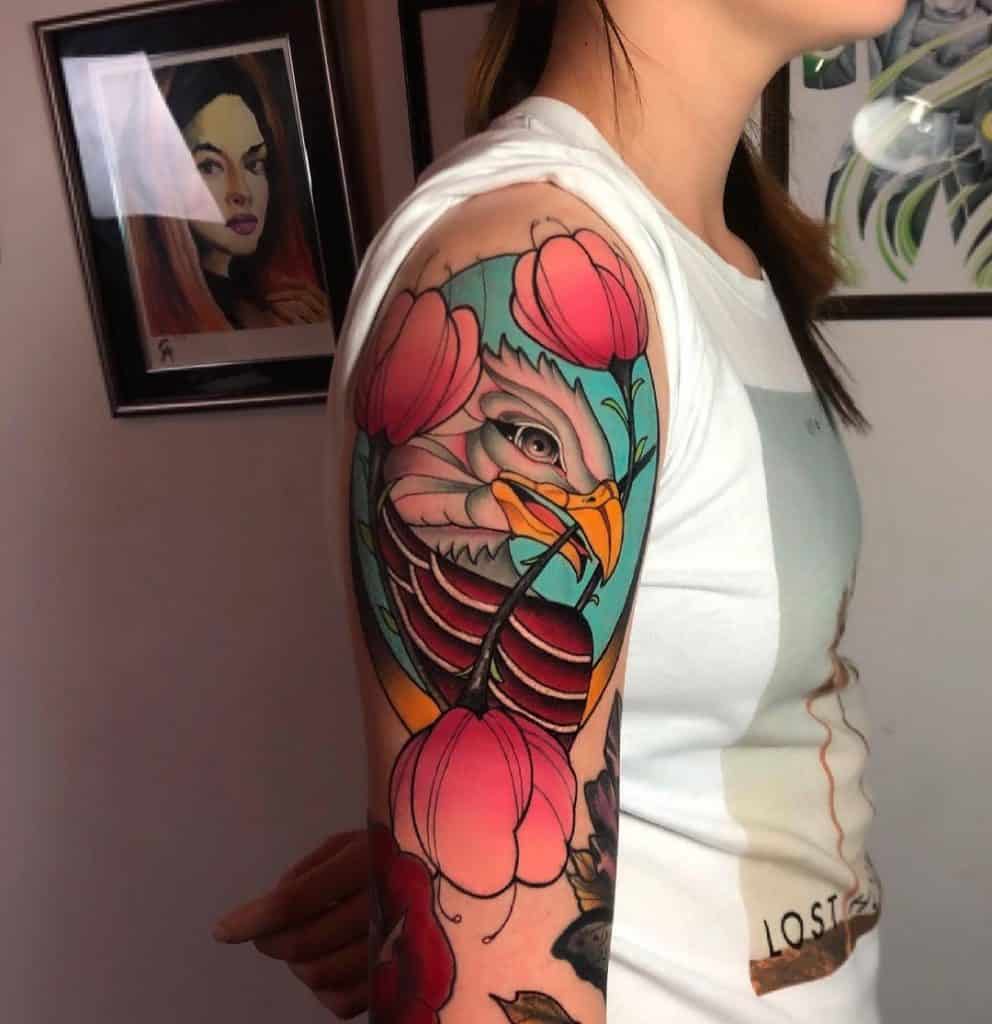
If you love the themes and designs of traditional tattoos but want to take them to the next level, the neo-traditional tattoo style will appeal to you. Portraits, floral designs, and cartoon styles are enhanced with lush colors, shading, and a level of depth that traditional tattoos can’t usually reach.
Another thing that we love about neo-traditional tattoos is the color palate available. You aren’t limited to the colors that sailor Jerry used when he invented the American traditional style, for example.
Add pops of fuchsia pink or neon yellow while retaining that classic and classy original tattoo design. Just like traditional tattoos, this style looks great as a sleeve.
Body Frame Patterns
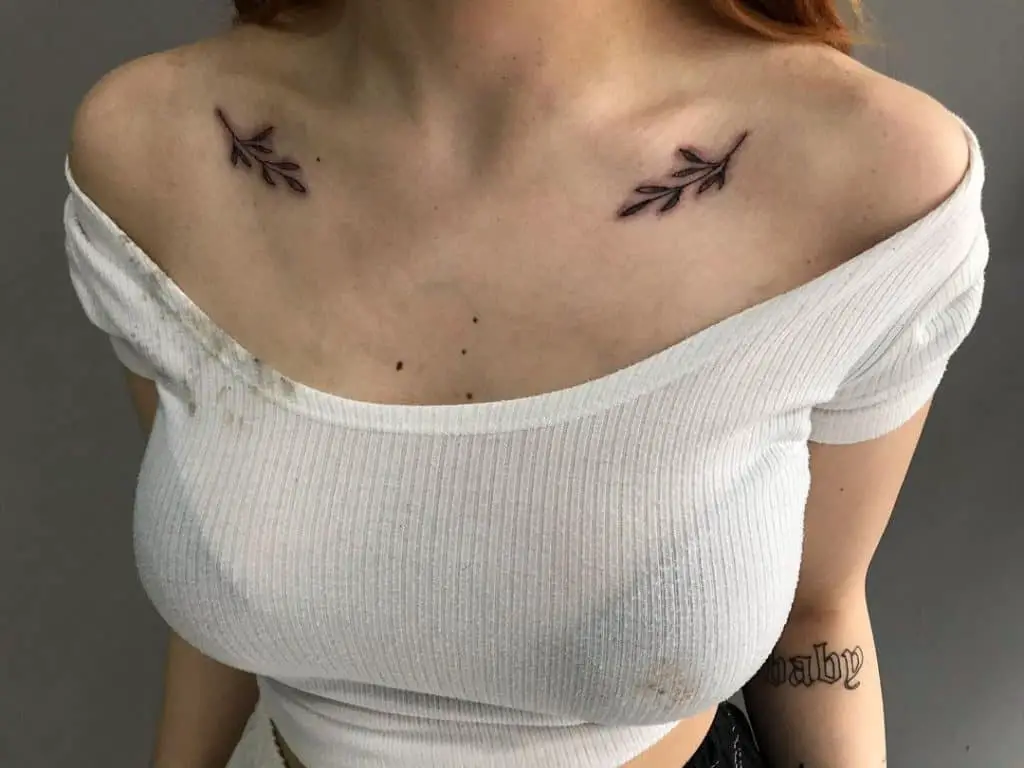
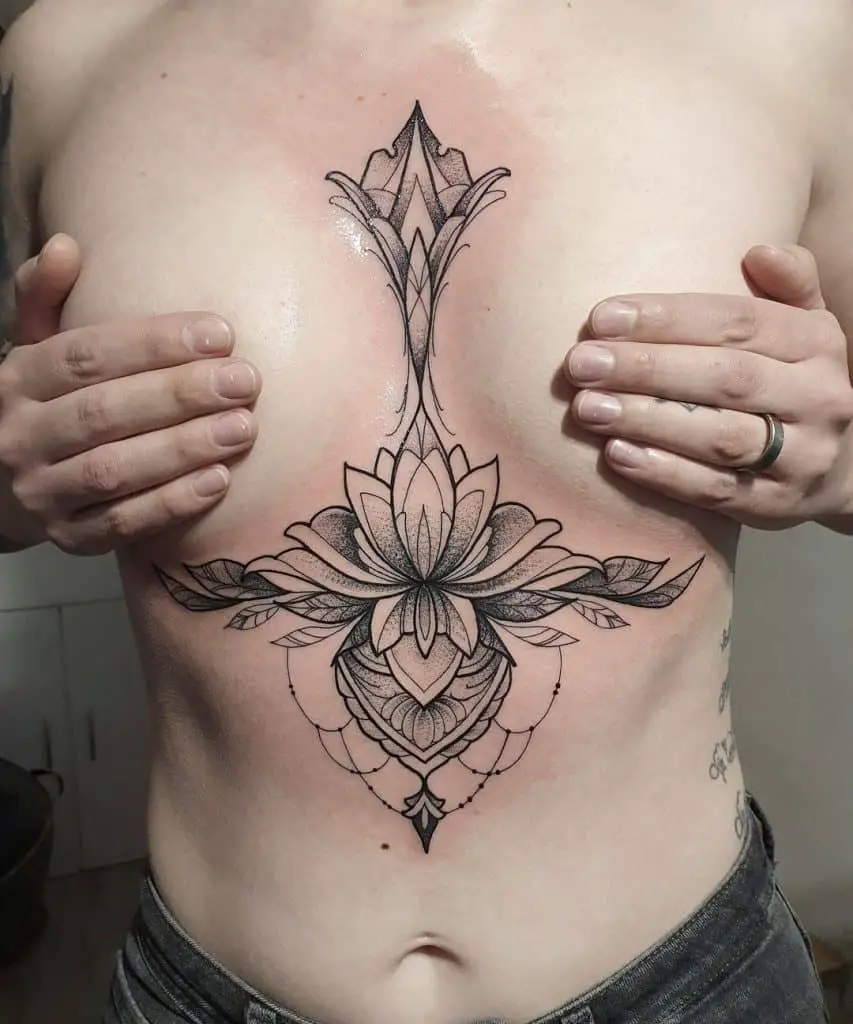
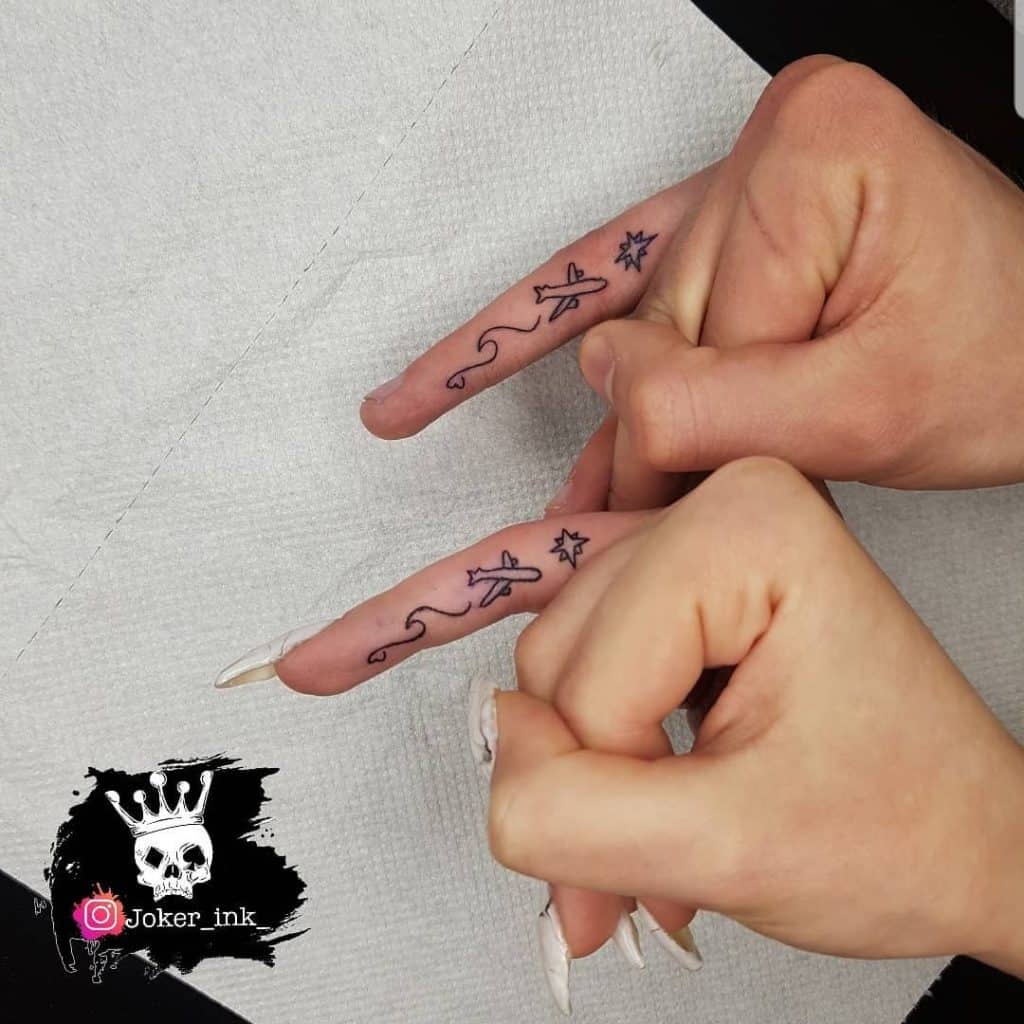
This style includes all decorative patterns and designs that flow with your body. Particularly popular with women, this style compliments your natural body frame.
Almost like a piece of jewelry, these tattoos are often more decorative than meaningful. There’s still a lot of scope, however. These body frame tattoos can be delicate and intricate like a mandala, or bold with sweeping strokes. They can be colorful and bright with clean lines, or dark and mysterious with plenty of shading.
Under breasts, along shoulders and curving around hips – these are all great placements for pattern tattoos.
Blackwork
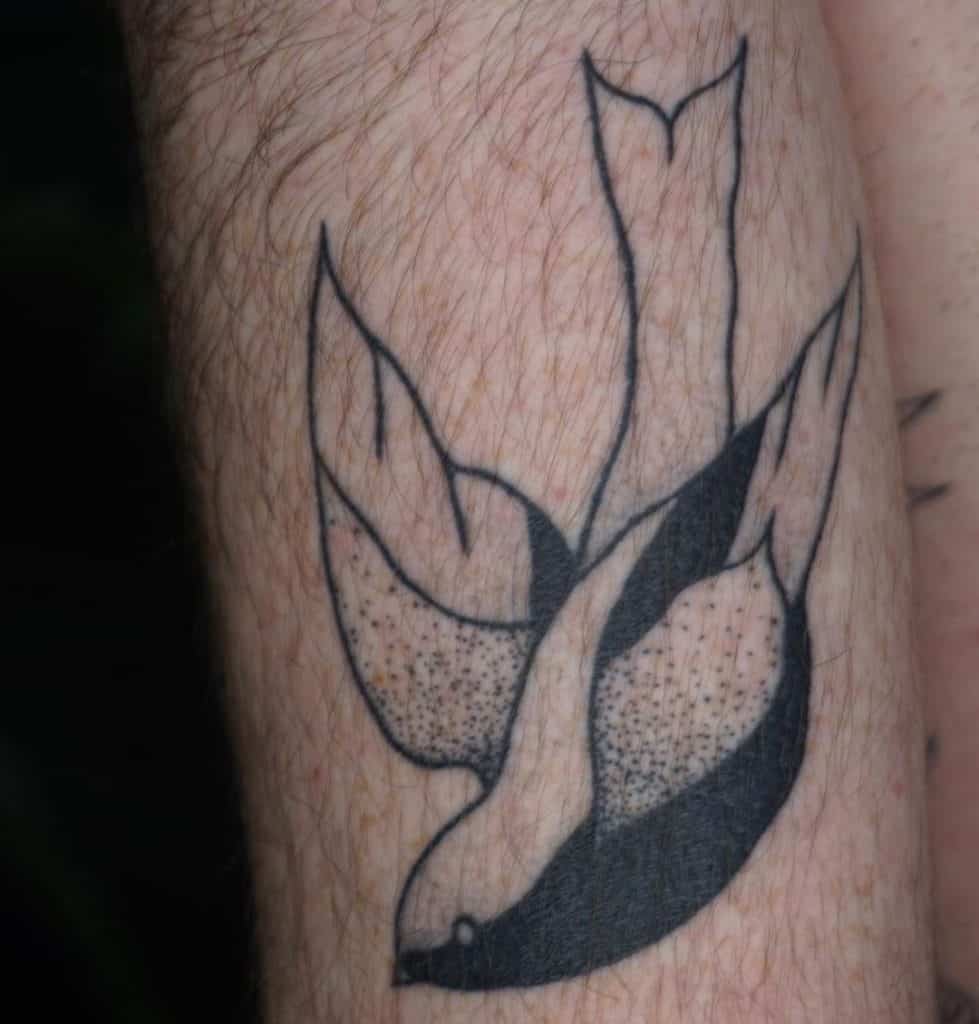
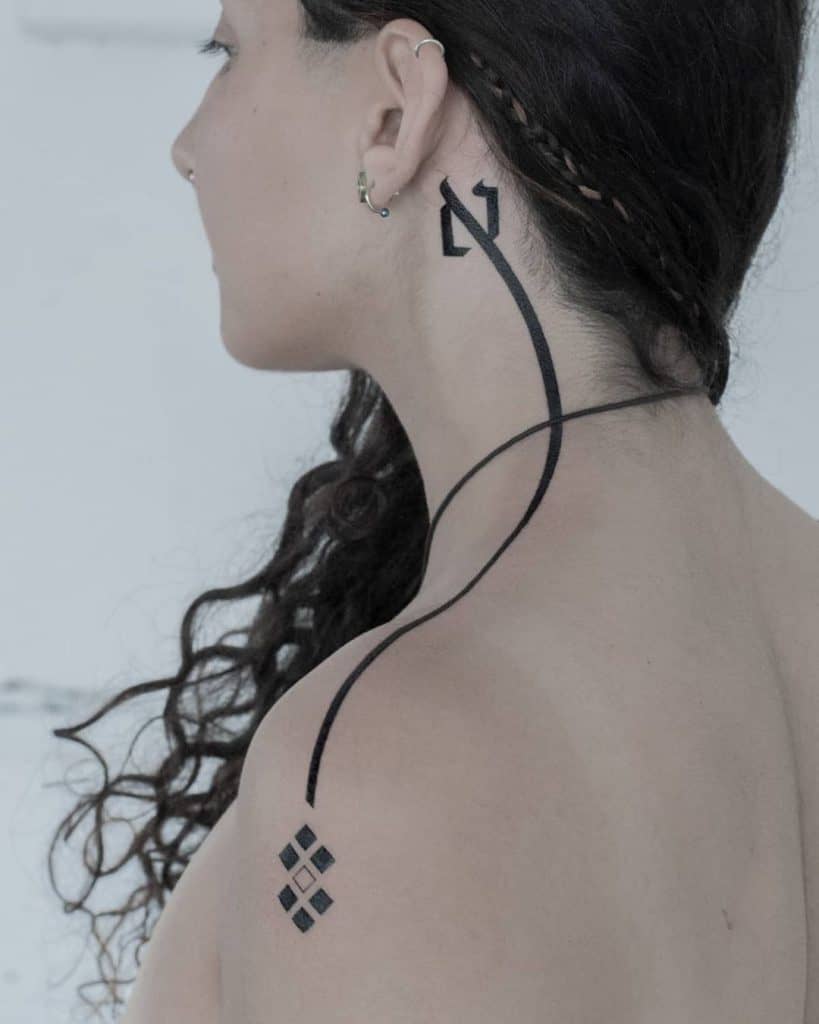
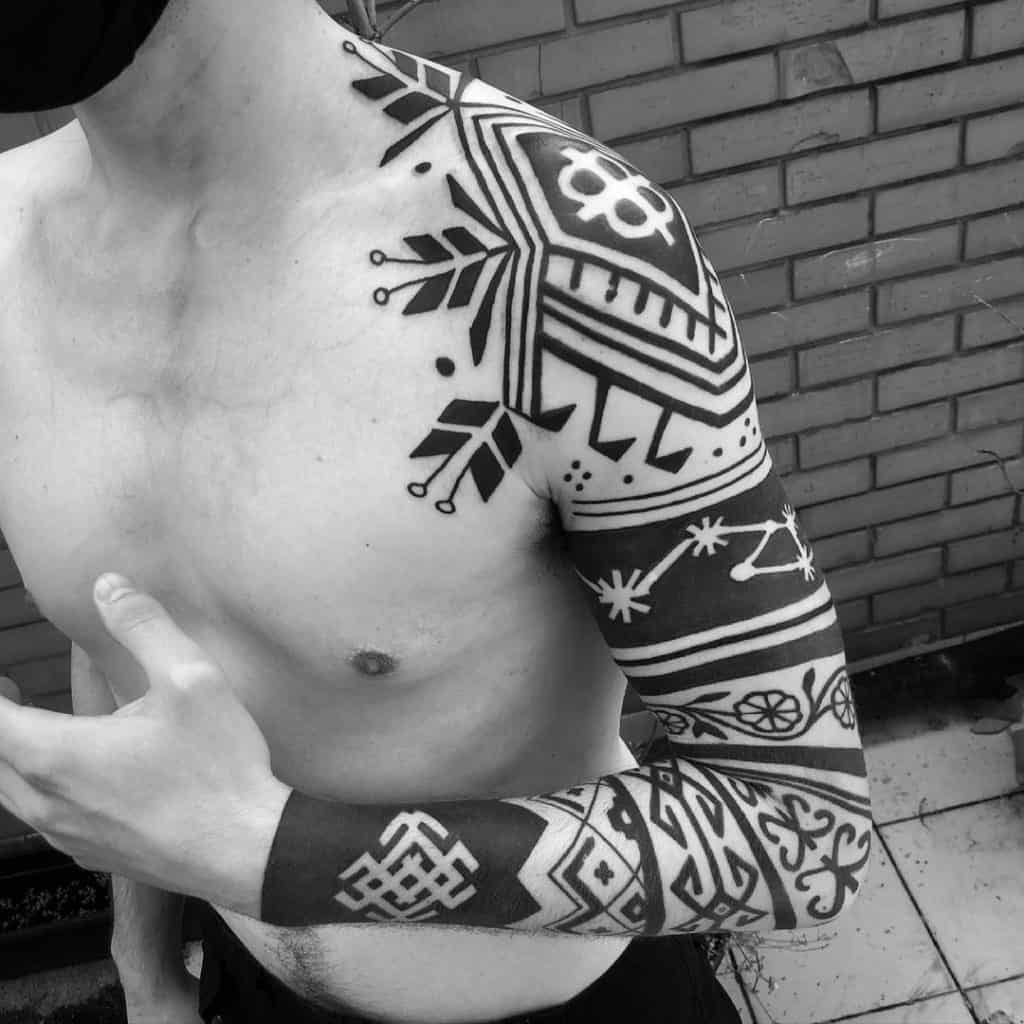
If you’re looking for a really cool badass tattoo, then blackwork style might be for you. The clue to this tattoo style is in the name. These tattoos only use black ink, and they typically feature dark themes (but not always).
If you’re looking for intricate detail, shading, and 3D effects, see ‘Black and Grey’ tattoo style below. Blackwork is typically chunkier and solid. There’s minimal shading or blurring of the lines.
Solid black tribal styles, mandalas, sweeping black lines, and dark scenes are all common. Wolves, skulls, and symbols of alchemy are all very popular in this style.
Lettering
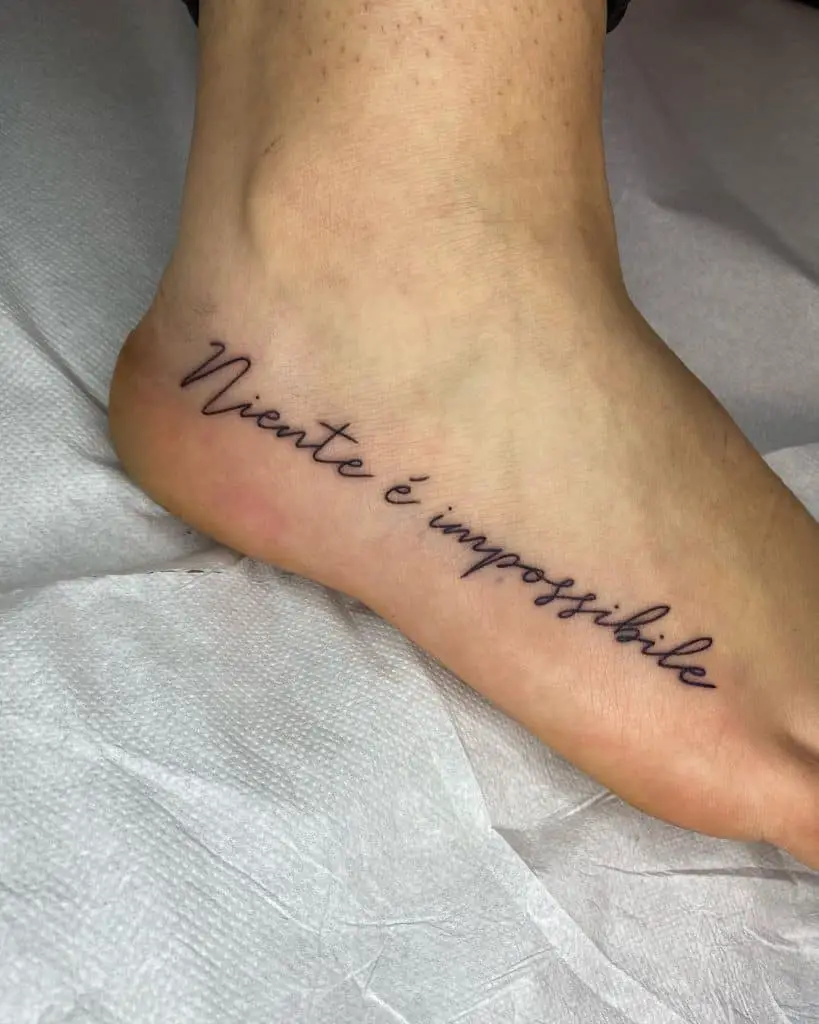
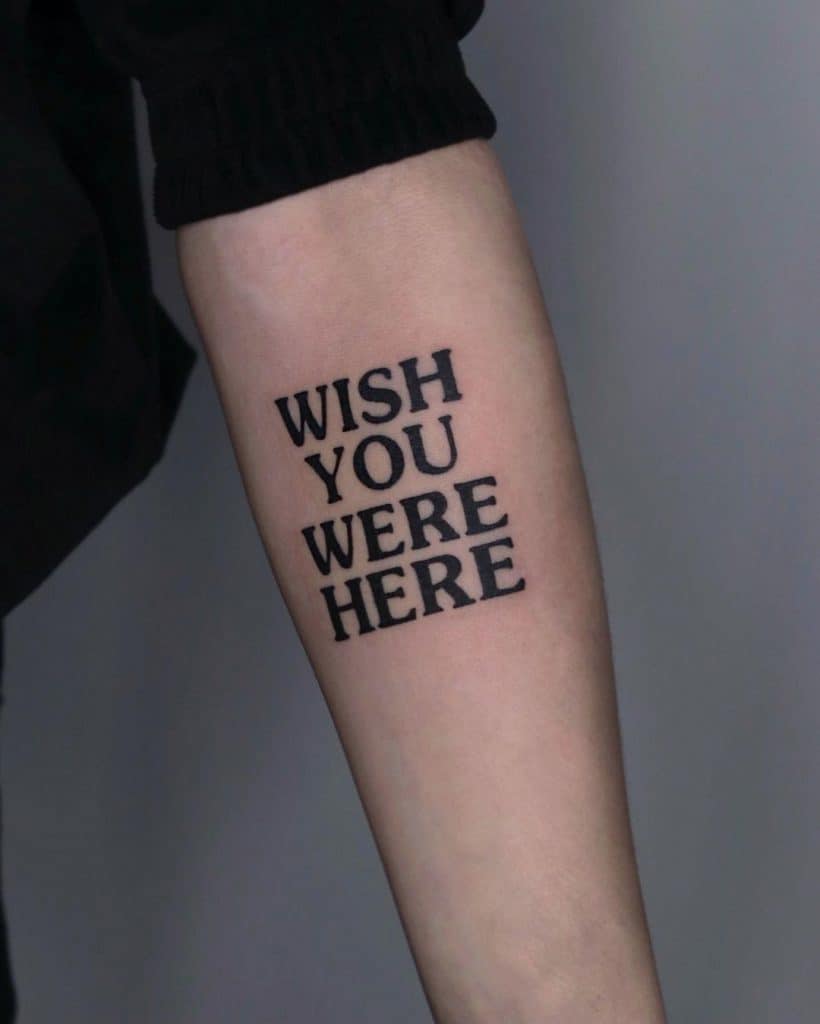
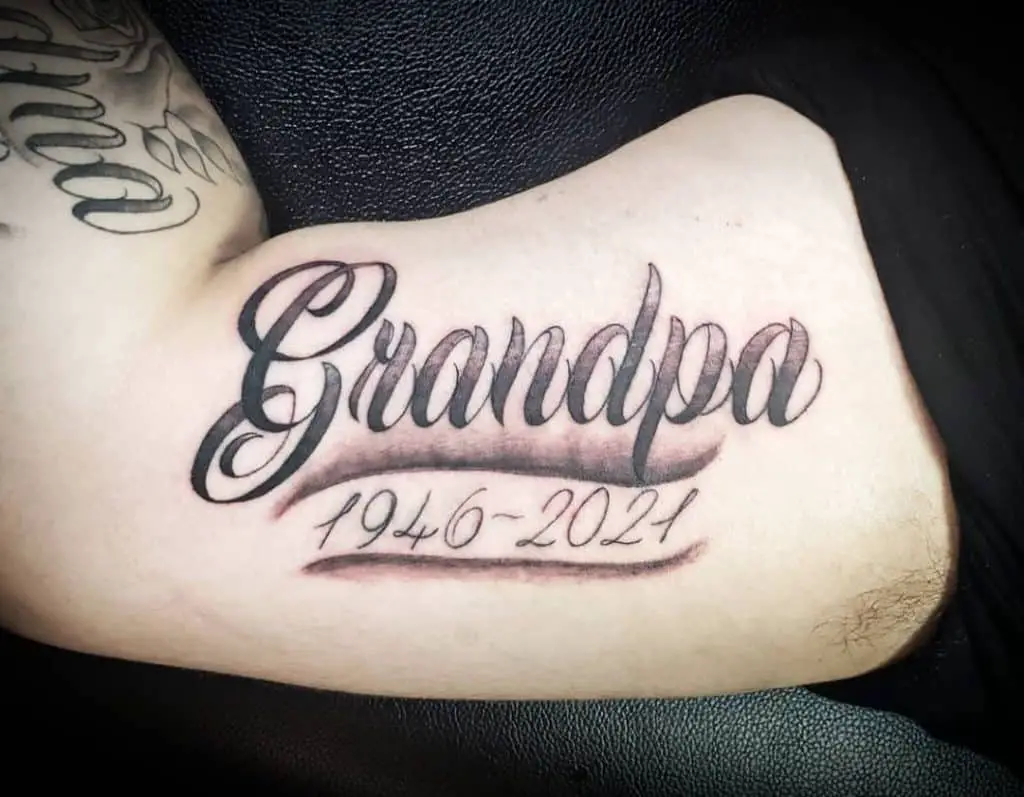
Lettering is incredibly popular on its own or with tattoo symbols and designs. You might think that compared to symbols and artwork, words must have a very obvious meaning. But that’s not strictly true. A significant quote that means a lot to you, or a single word that instantly brings up a cherished memory. Lettering tattoo styles are a great way to ink those onto your skin forever.
The most important choice here is font. Do you want bold and impossible to miss, or delicate calligraphy that’s as pretty as any floral tattoo?
One of the great things about lettering is that it looks great wherever, as the font size can be increased and decreased for any placement.
Color Realism
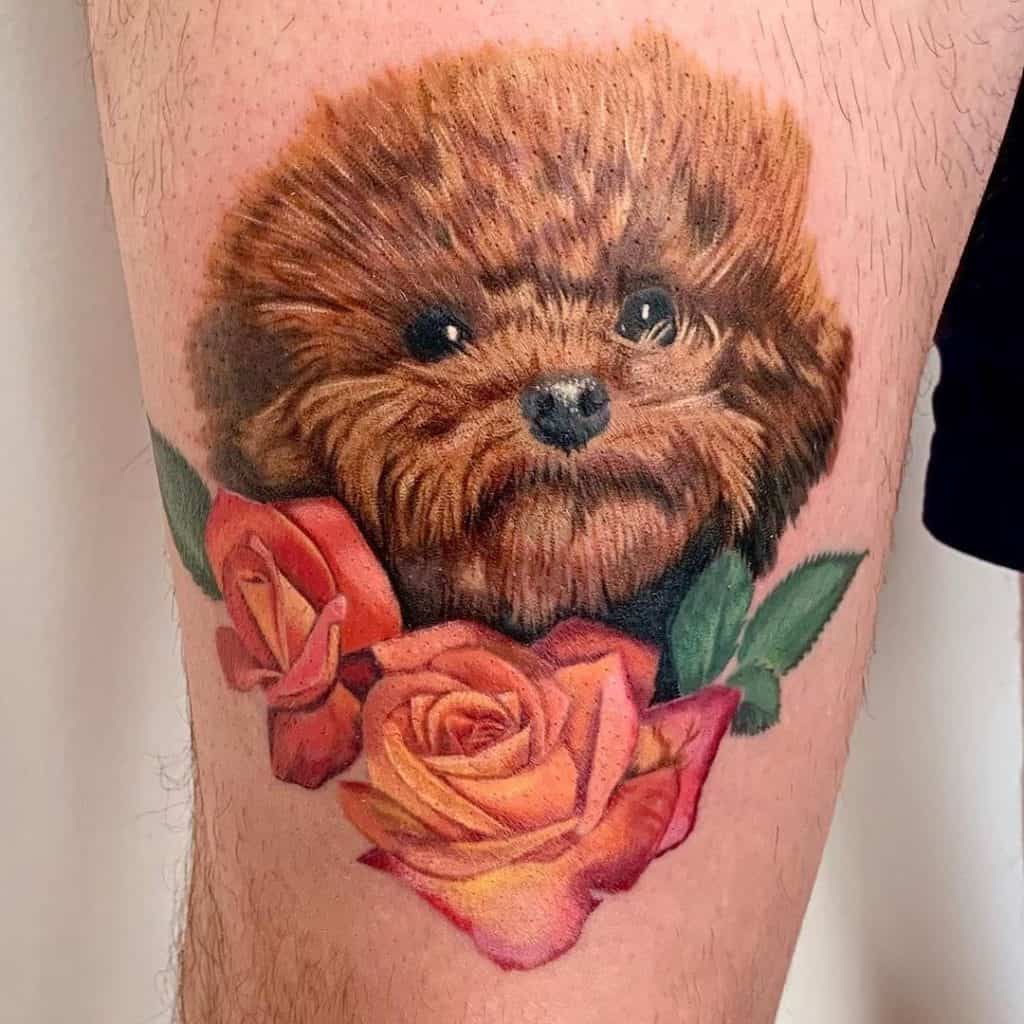
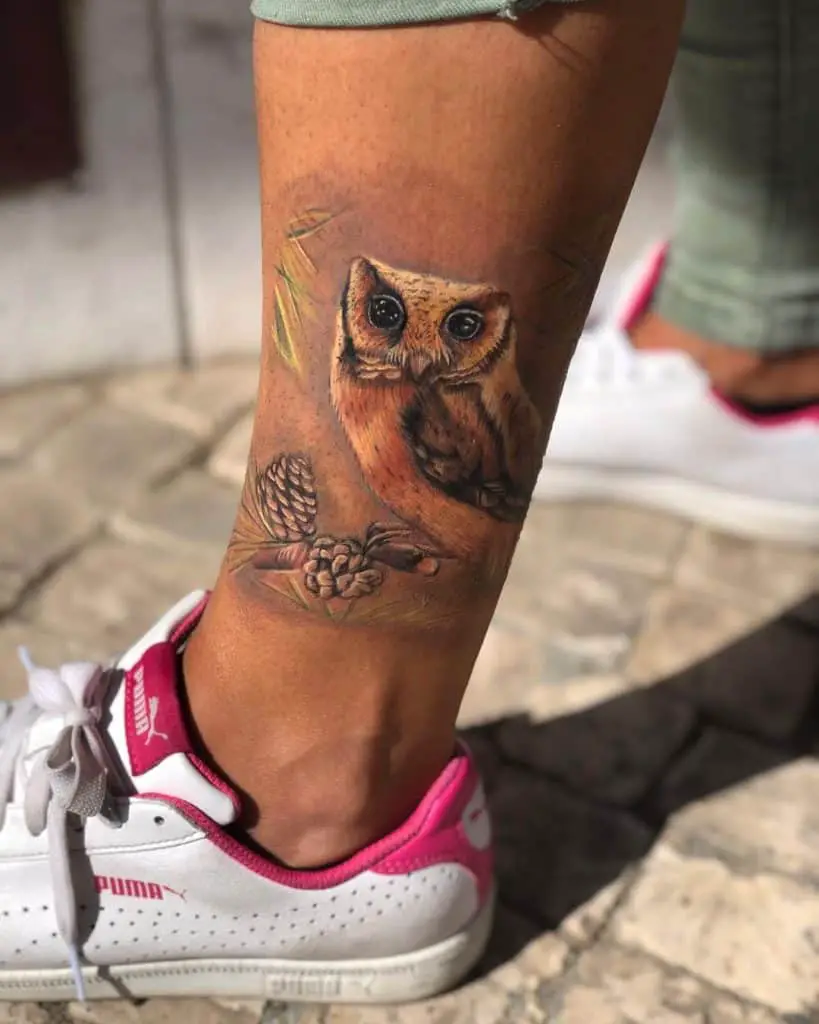
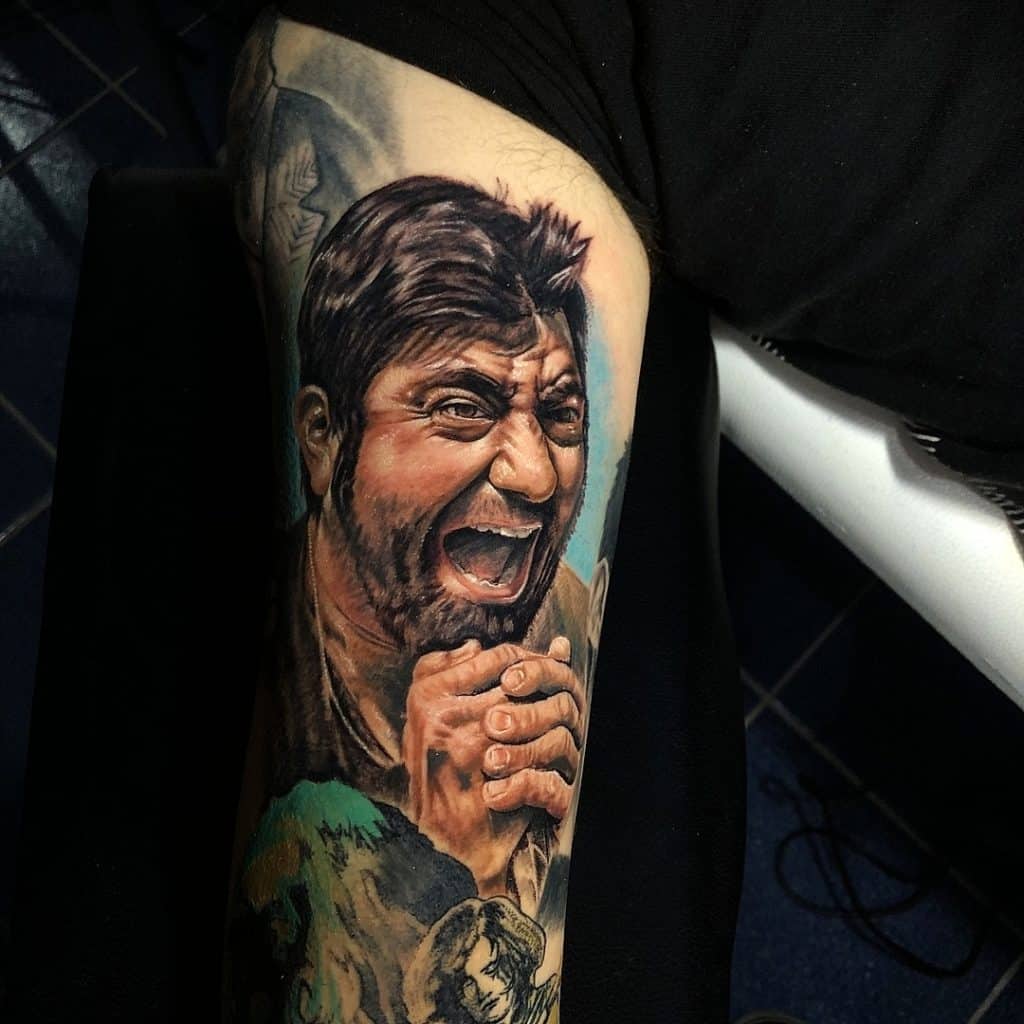
Imagine if you could tattoo a photograph on your body. Now imagine that it’s in so much detail that it actually looks like a photograph. In a nutshell, that’s what color realism is.
With a limitless palate, the only real rule with color realism is that the final tattoo looks as close to real life as possible. The end result is a tattoo with vibrant colors that will really stand out in a crowd.
Bear in mind, you’ll need to find a very skilled tattoo artist to pull off color realism perfectly. The level of artistry involved is high. Get ready for long and intense tattoo sessions too!
Black and Grey
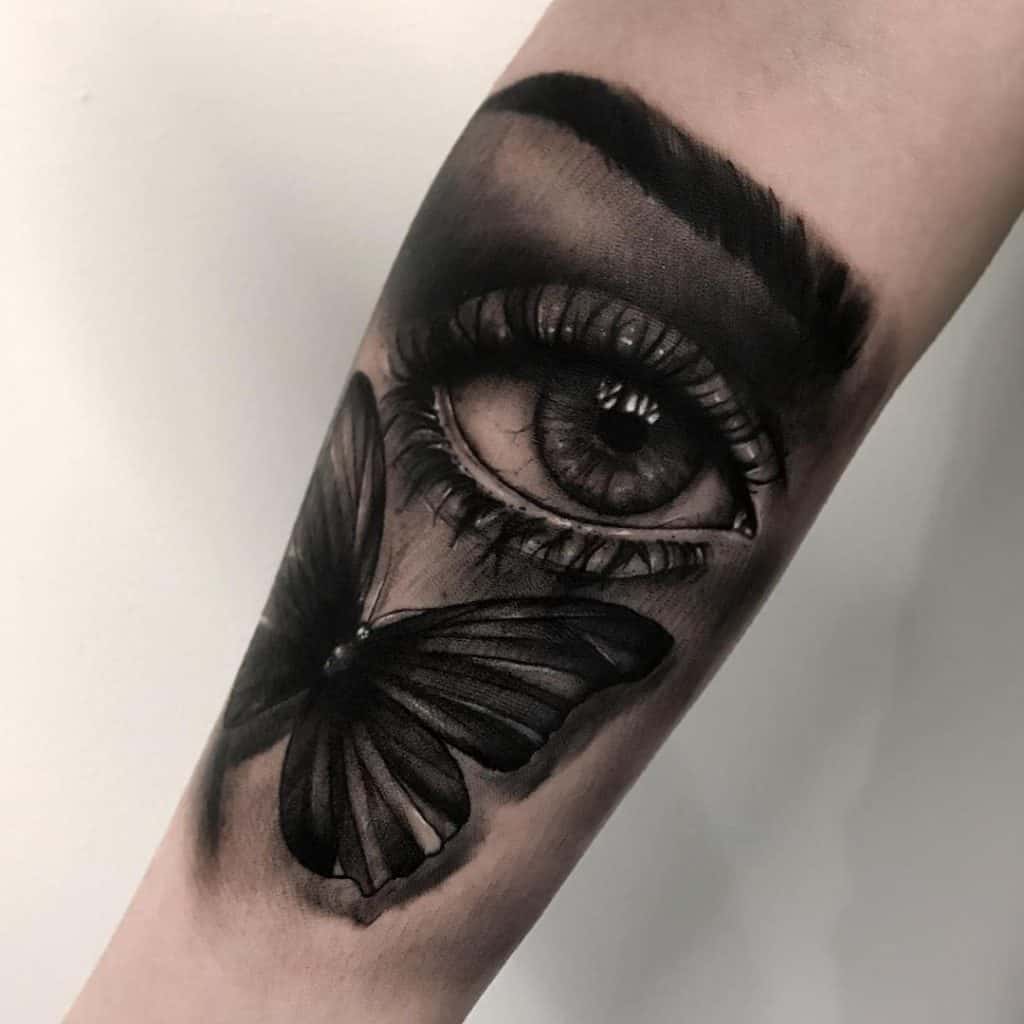
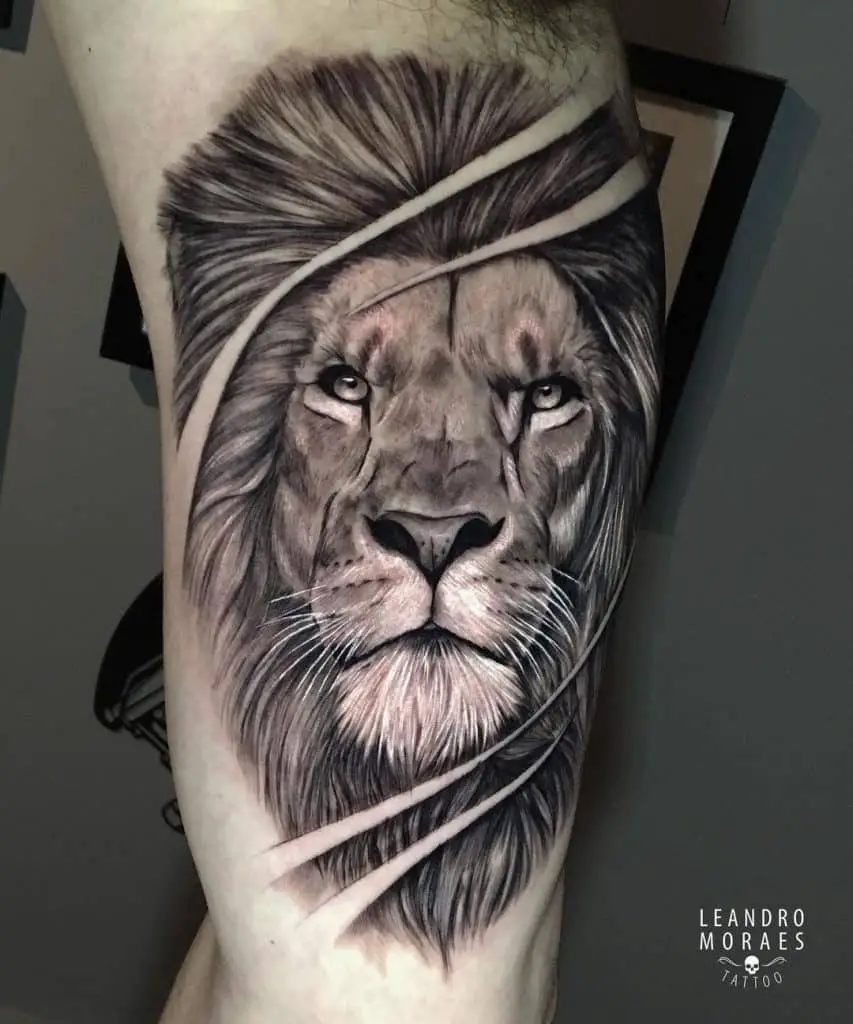
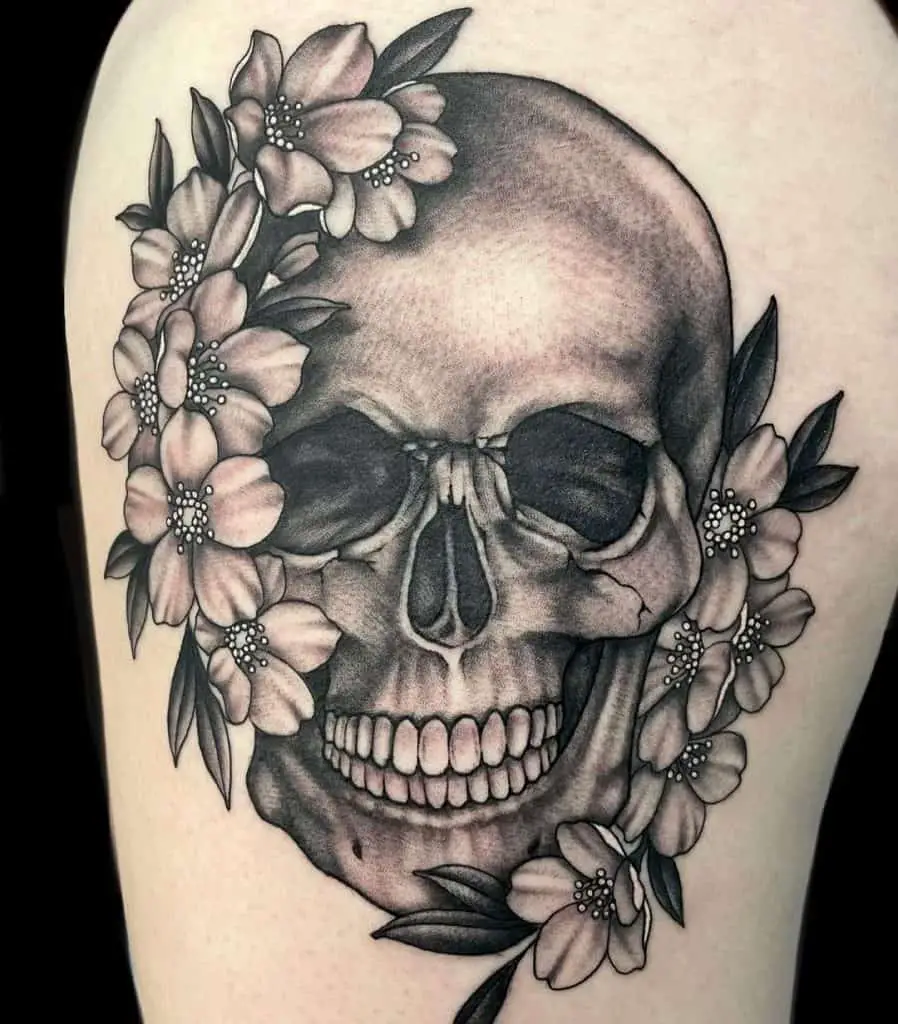
Black and grey – pretty self-explanatory! This style of tattoo relies simply on black ink, diluted to various degrees with white ink, to create endless shades of grey.
There is no color in these tattoos.
Unlike blackwork tatts, there’s an incredible amount of shading and detail incorporated. Like color realism and photorealism artwork, black and grey tattoos can recreate an image with impeccable accuracy.
Religious tattoos, portraits of loved ones who’ve passed on, and other solemn designs tend to work well with the black and grey style.
Watercolor
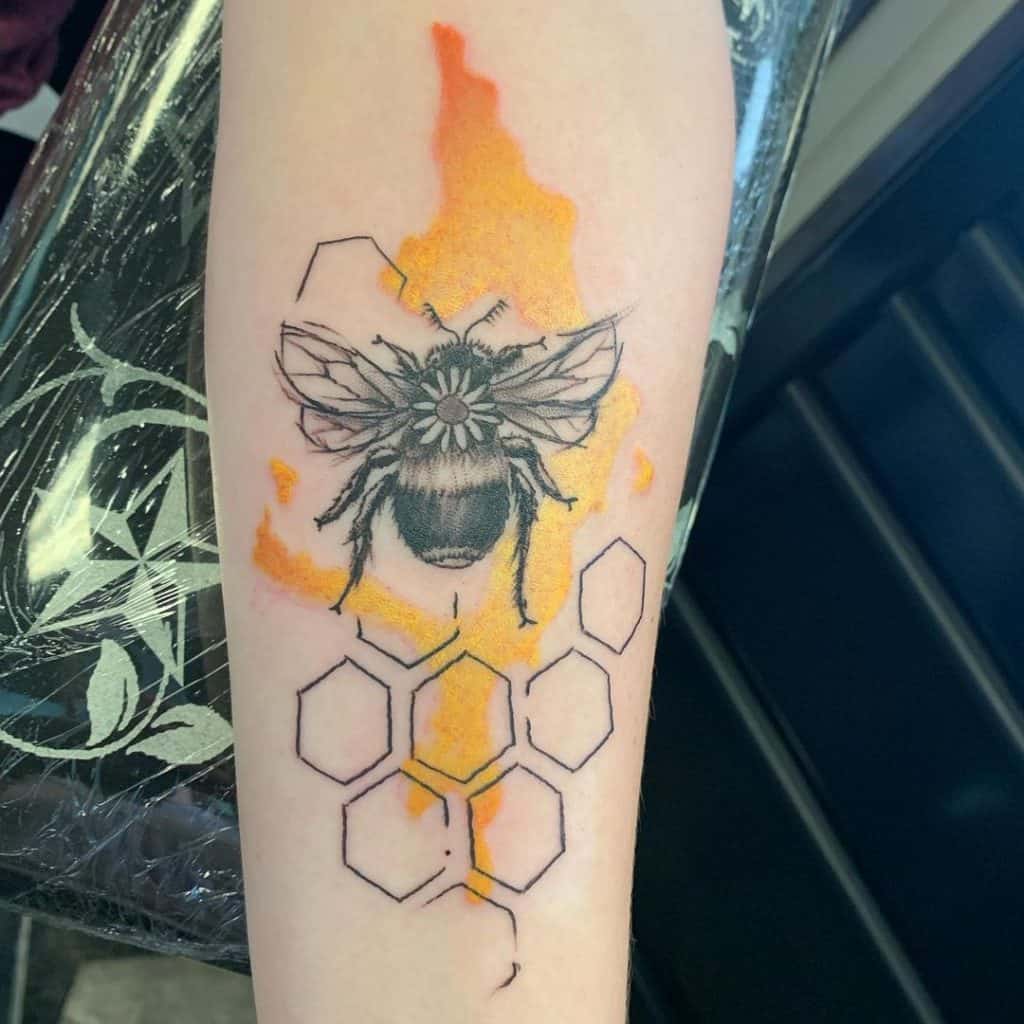
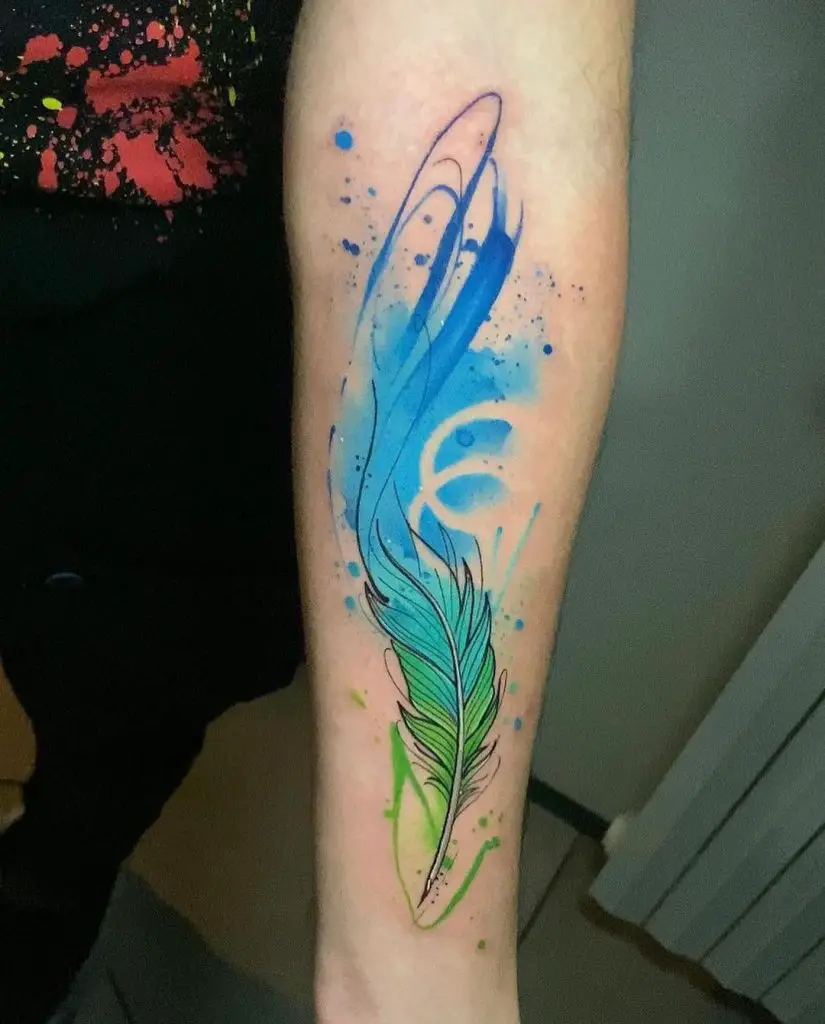
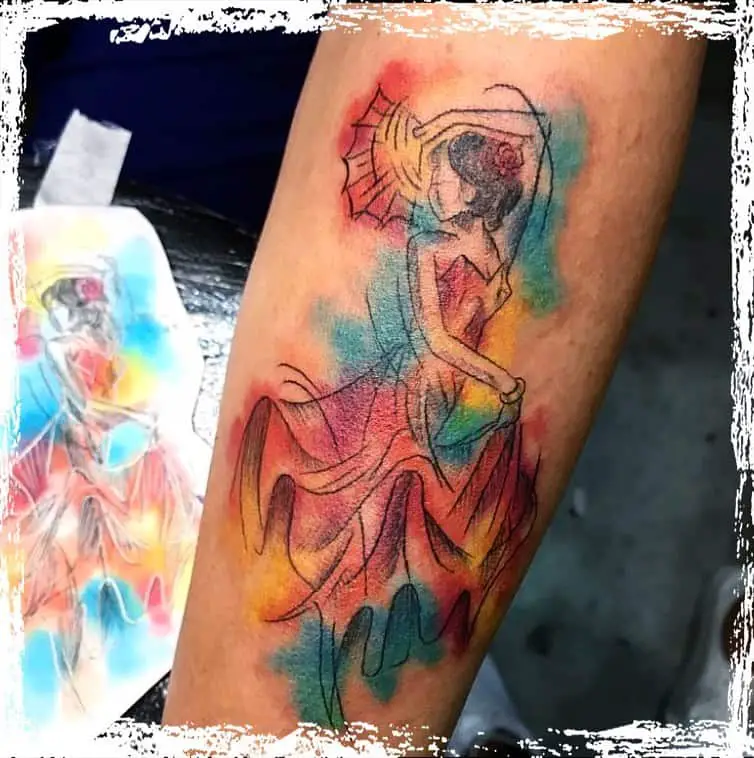
Watercolor tattoos are incredibly popular. Usually, they are either just watercolor paints or watercolor paints beneath a simple black line tattoo. Both styles are beautiful! The trick with watercolor tattoos is to make the colors look like they’ve just been splashed on your skin. It takes a skilled artist to get a watercolor tattoo right.
Popular watercolor tattoo designs include a line portrait, cartoon character or scripted word atop a mix of watercolor paints. Another popular watercolor tattoo design is delicate flowers with watercolor petals. This is a beautiful effect. As you can imagine, it’s popular with women.
Minimalism
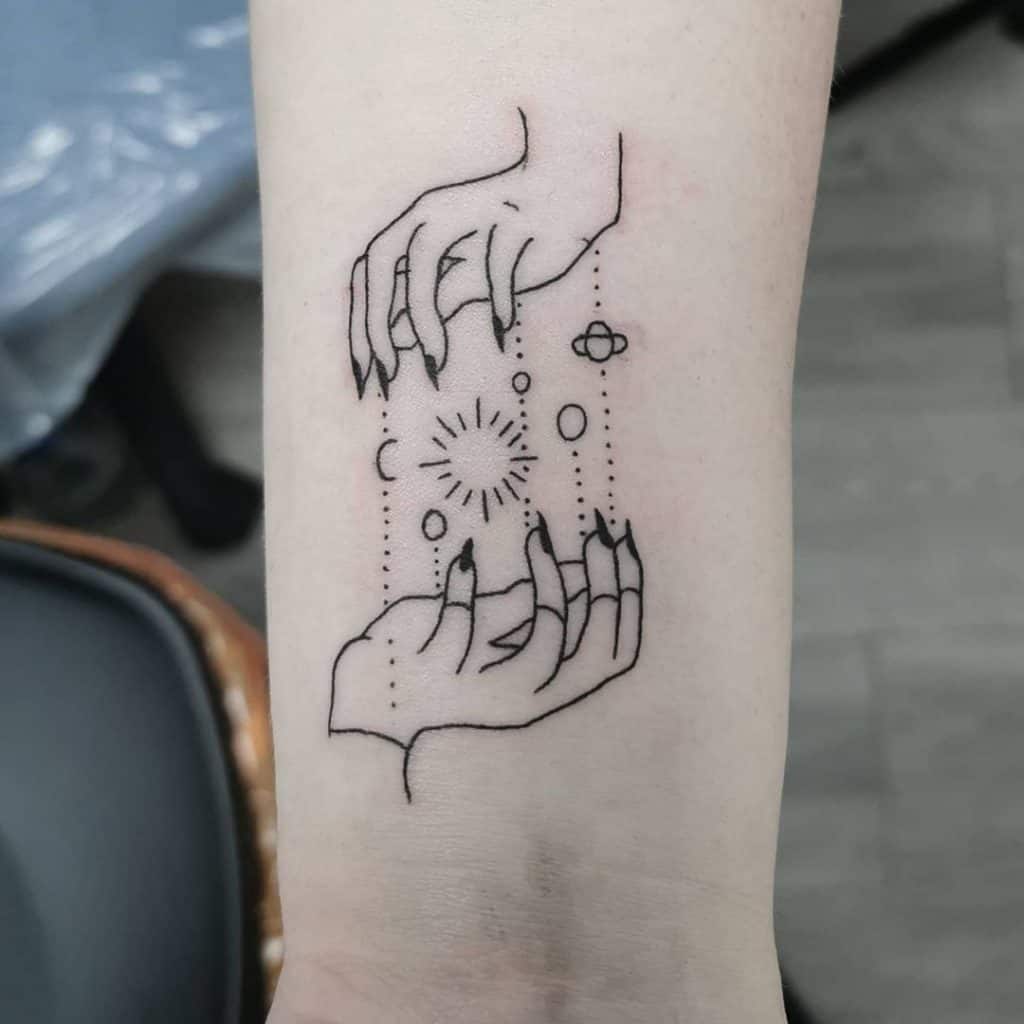
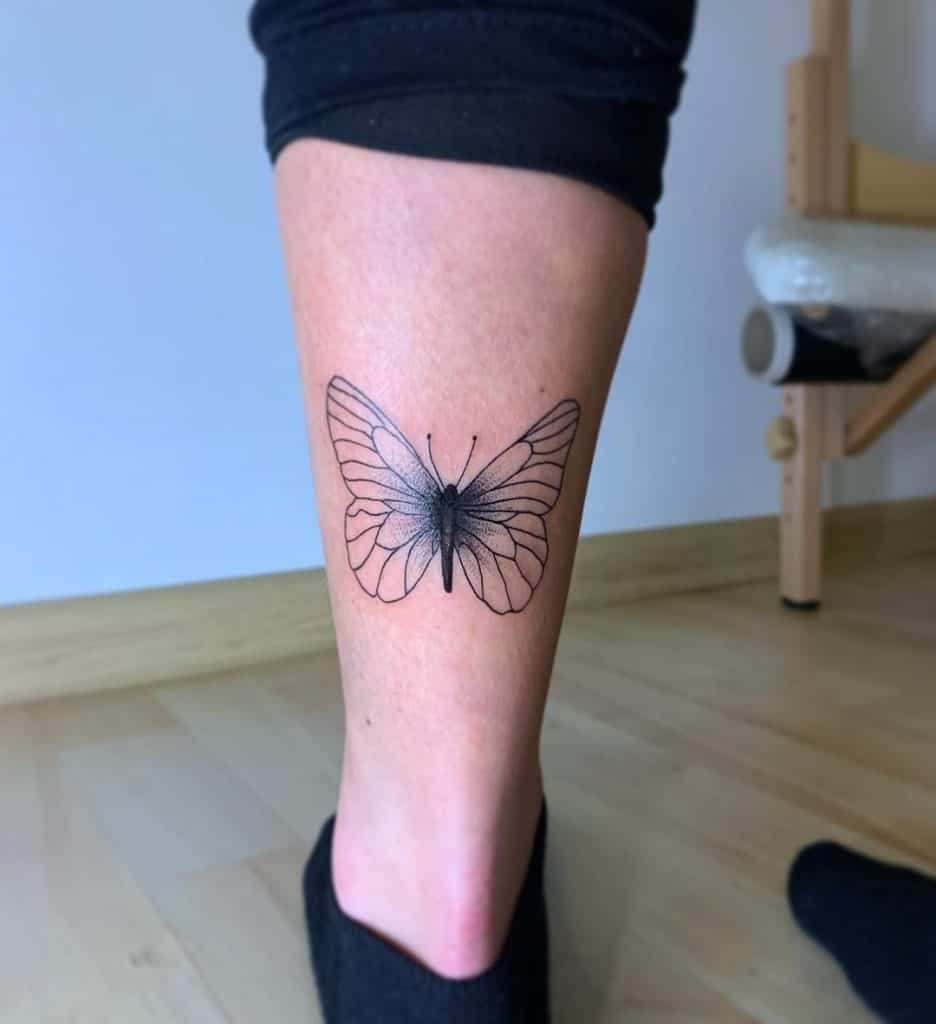
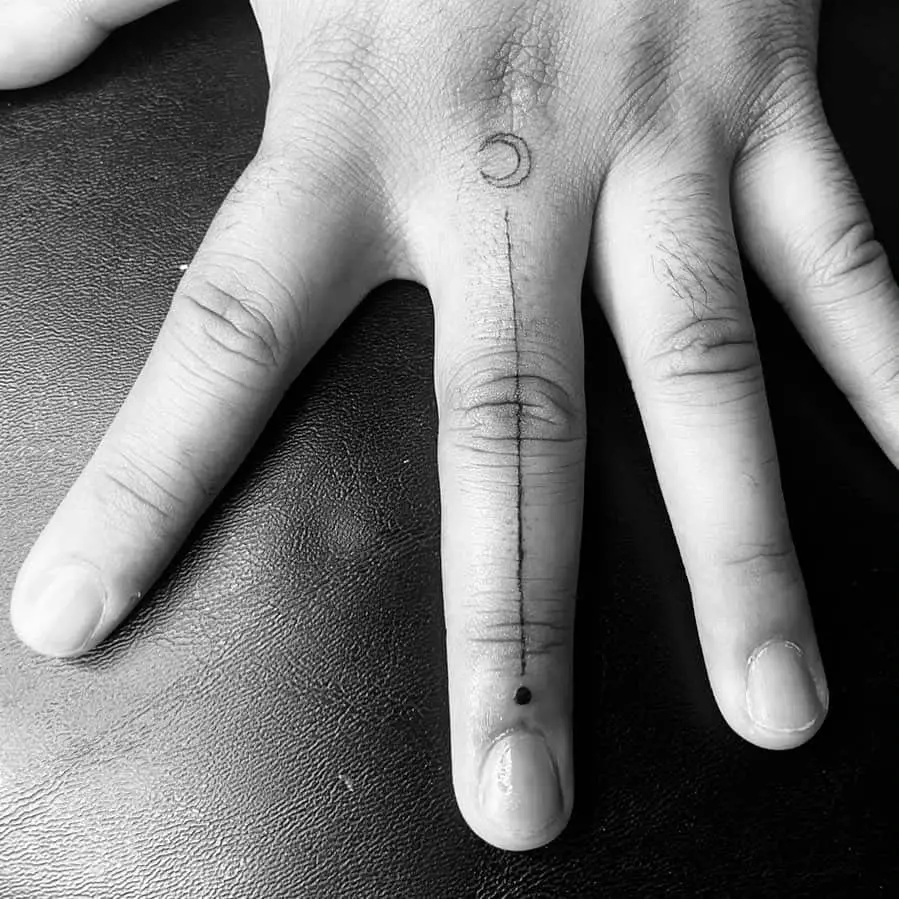
More is less when it comes to minimalist tattoos. Often combined with lettering (choose a simple font) and geometric tattoo styles, the minimalist tattoo keeps things simple. There won’t be a mess of colors or bucket-loads of shading. Instead, simple lines and a clean design are essential.
When it comes to tattoo minimalism, placement is important. Minimalist tattoos are quite small, so they look best in confined areas. Your wrist, ankle, finger, etc. These are great places to display a minimalist tattoo. Floating somewhere on your back or side, however, may look a little odd.
Check out our tattoo design archives for more.
Tattoo Placement
Tattoo placement is equally as important as the tattoo design. A brilliant tattoo will look strange in the wrong placement!
By placement, we mean the location of the tattoo on your body, as well as the size and orientation of the design.
For example, some people like to have the tattoo facing them. Hold out your wrist – if you got a word tattooed here, would you want it facing you, or facing someone standing in front of you?
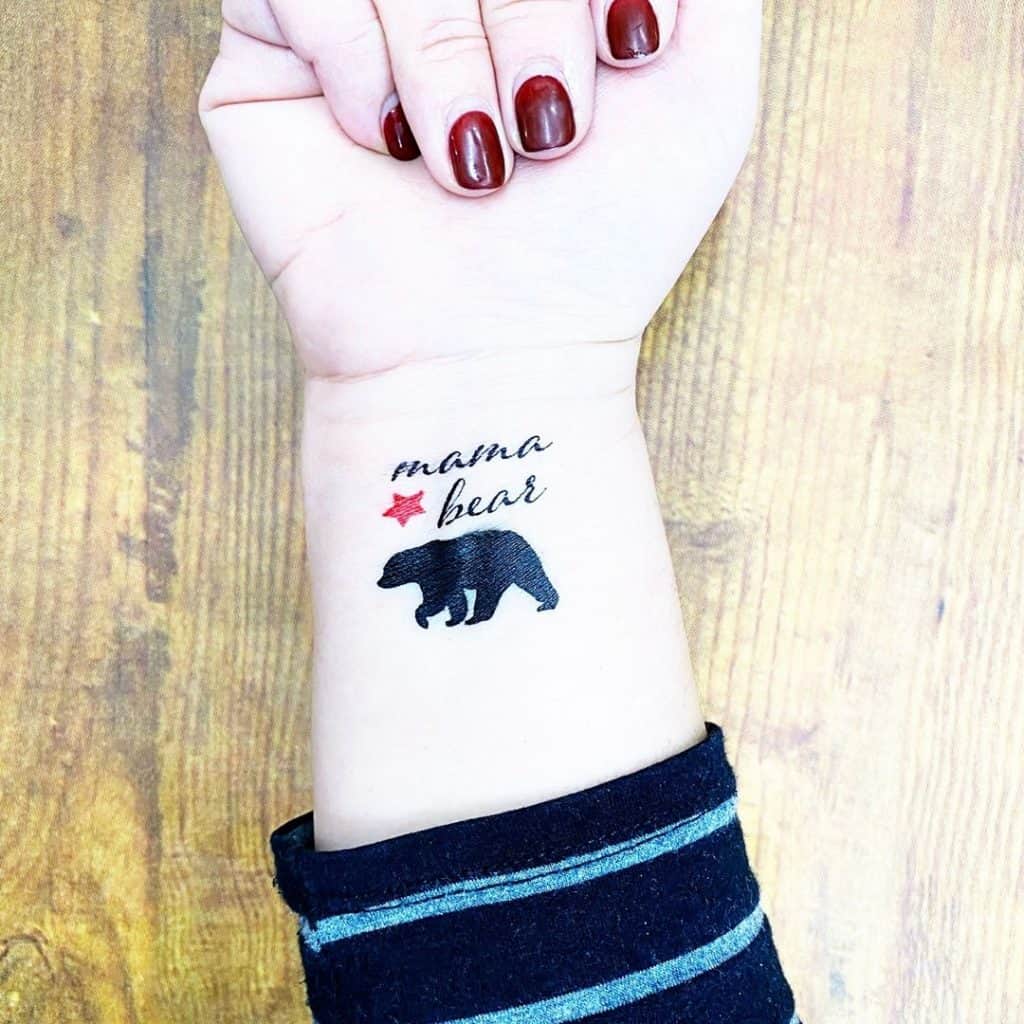
The size is important as well. Sometimes, a very small tattoo placed on a large area of your body (e.g. your chest) can look out of place, or like it’s floating in mid-air. That doesn’t necessarily mean that small tattoos can only go on small areas. A single quote underneath one breast, along a collarbone, or vertically down your spine is a good example of a small tattoo placed well on a large body area.
A good way to work out what placement is right for you, is to buy henna or use eyeliner to draw the tattoo on your body. If you don’t like the placement, just wash it off and choose another spot. Repeat until you find a placement you like.
For more ideas and a more comprehensive list of placements, check out our guide to Tattoo Placement Ideas.
Small Tattoo Placements
Small tattoos might not be able to show a lot of detail, but they can be extremely meaningful. There’s a lot of power in a tattooed symbol, even if it’s only 1cm across!
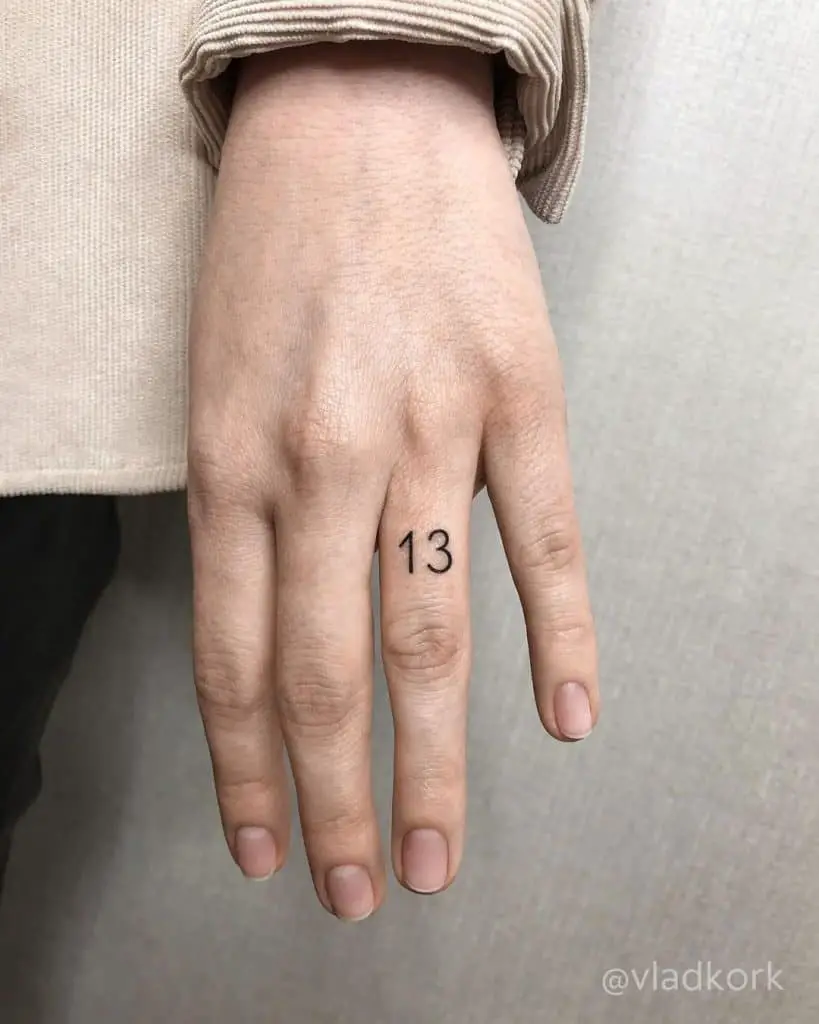
Good places for tiny tattoos:
- Finger sides,
- Finger tops,
- Knuckles,
- Inner wrist,
- Toes,
- Behind ears.
If you want a tattoo that’s bigger than a dime but still not huge, you have some more options. Wrists, neck and ankle areas are all good for small tattoos. Of course, if you already have a sleeve or large tattoo artwork, then you could incorporate your new small tattoo in it.
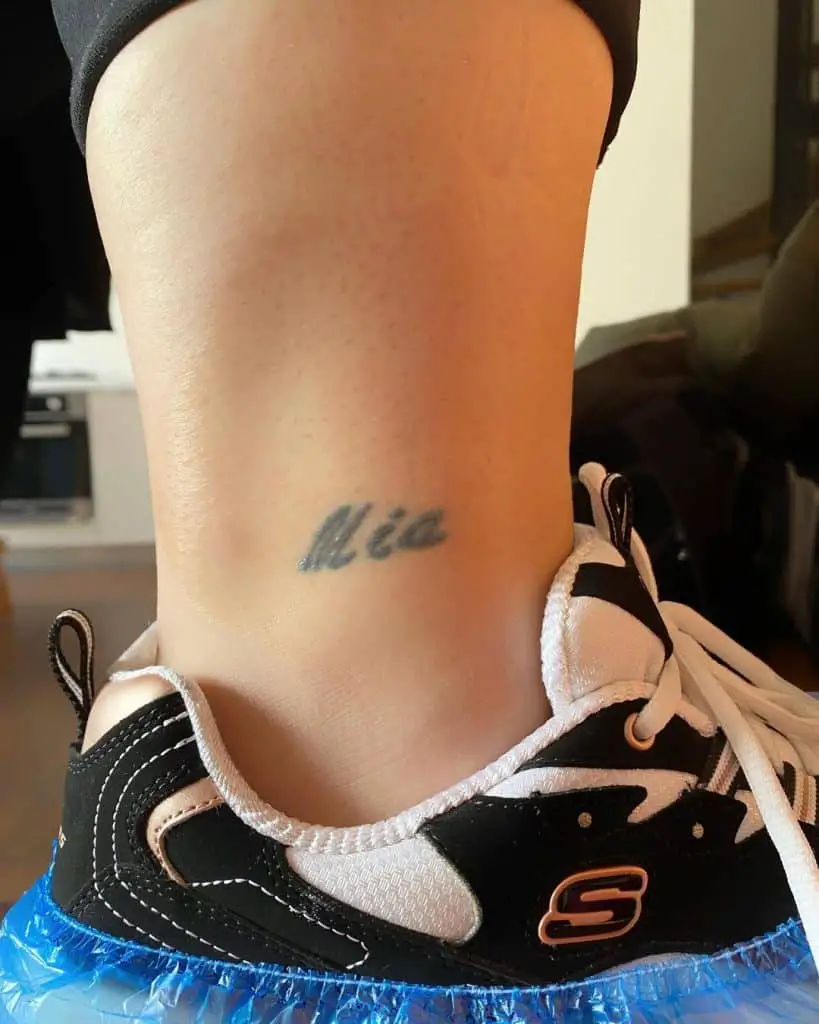
Good places for small tattoos:
- Ankles,
- Inside hip bone,
- Groin,
- Along collarbones,
- Inner wrist
Read More:
Medium Tattoo Placements
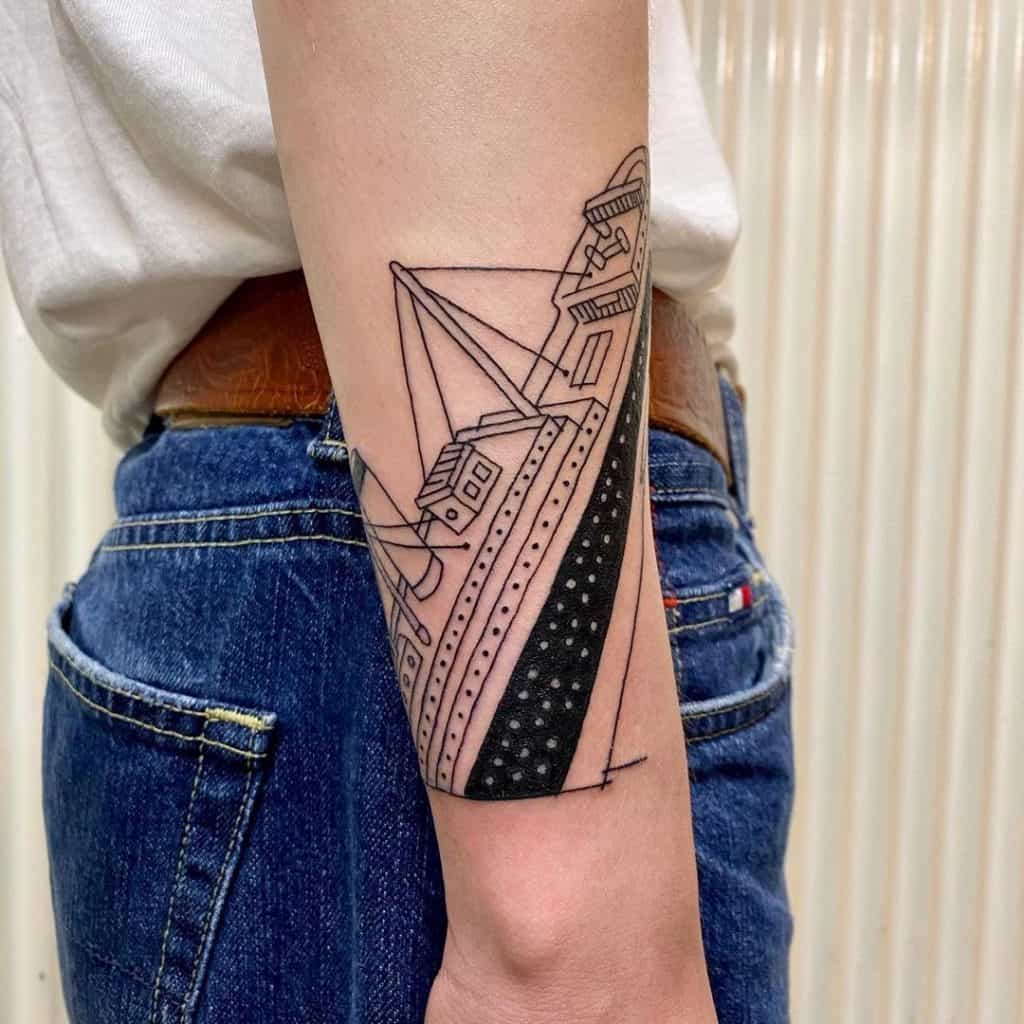
Medium tattoos are sizeable and noticeable. They’ll be too large to fit on one side of your wrist, but still a lot smaller than a whole back tattoo or sleeve!
With medium sized tattoos, you might need more than one session. It depends on the tattoo artist and the level of detail, lining and shading required.
Medium tattoo placements should offer enough space to add more detail but just like small tattoo placements, you need to make sure they aren’t ‘floating’ in space.
Medium-sized tattoo placement ideas:
- Thigh,
- Calf,
- Hip,
- Ribs,
- Shoulder blade,
- Upper arm,
- Lower arm,
- Lower back.
Large Tattoo Placements
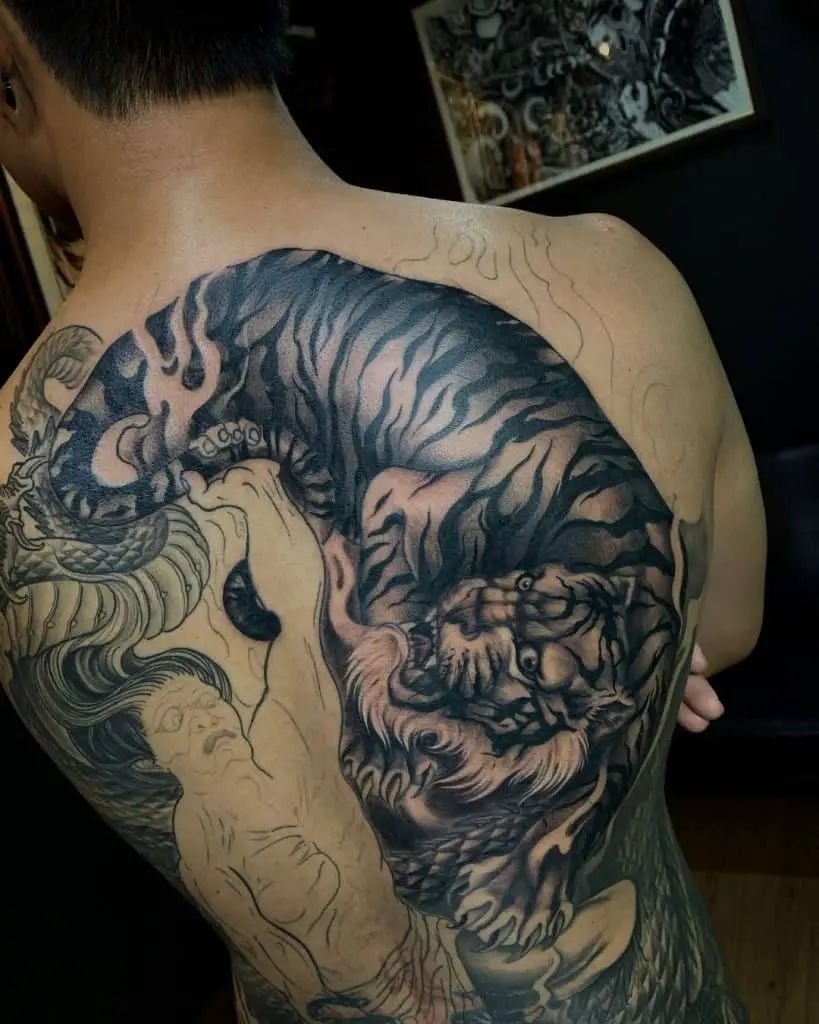
By large tattoo placements, we mean the kind that cover more than just one area of your body. Large tattoos don’t need to be extravagant (although we can’t deny loving those bold and bright artworks) to look good.
For example, you could have a sentence tattooed from the base of your spine to the top of your neck. It would be simple and elegant, yet still classified as a large tattoo.
With large tattoos especially, you may want to spend time thinking about how public the tattoo will be. A full sleeve will be hard to hide. A full back tattoo may be easier, however. It depends on your usual attire and the climate you live in.
Cool large tattoo placement ideas:
- Across your ribs and breasts,
- Full back tattoos (touching your shoulders and buttocks),
- Thigh to rib, sprawling over your hip and groin,
- Ankle to upper thigh,
- Wrist to neck.
Read More: 30+ Best Back Tattoos For Women: Ideas && Symbolism (2023 Updated)
Low-Pain Tattoo Placements
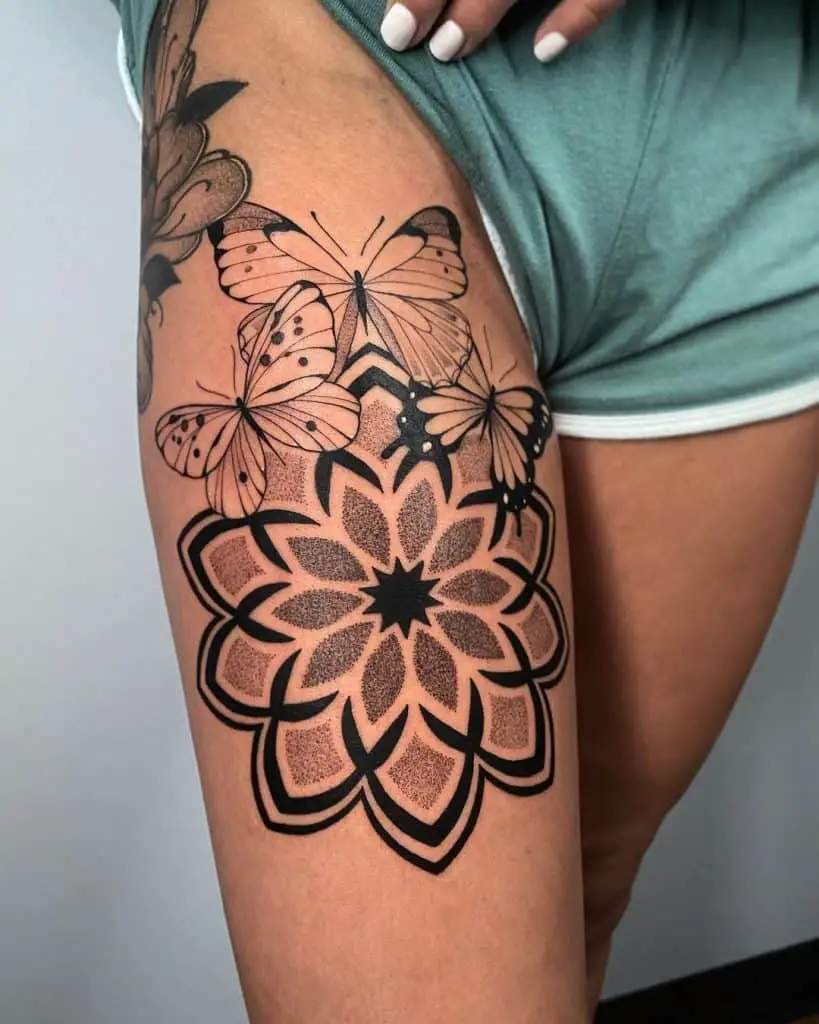
If pain is a major concern for you, checking out which placements are most likely to hurt is important. Generally, low-pain tattoo placements are on fleshy areas of your body. Anywhere there’s a lot of flesh between your skin and bones is good. Areas with few nerve endings are good too.
Low-pain placements:
- Wrist (not many nerves here),
- Thighs,
- Buttocks,
- Upper outer arm,
- Hip area.
High-Pain Tattoo Placements
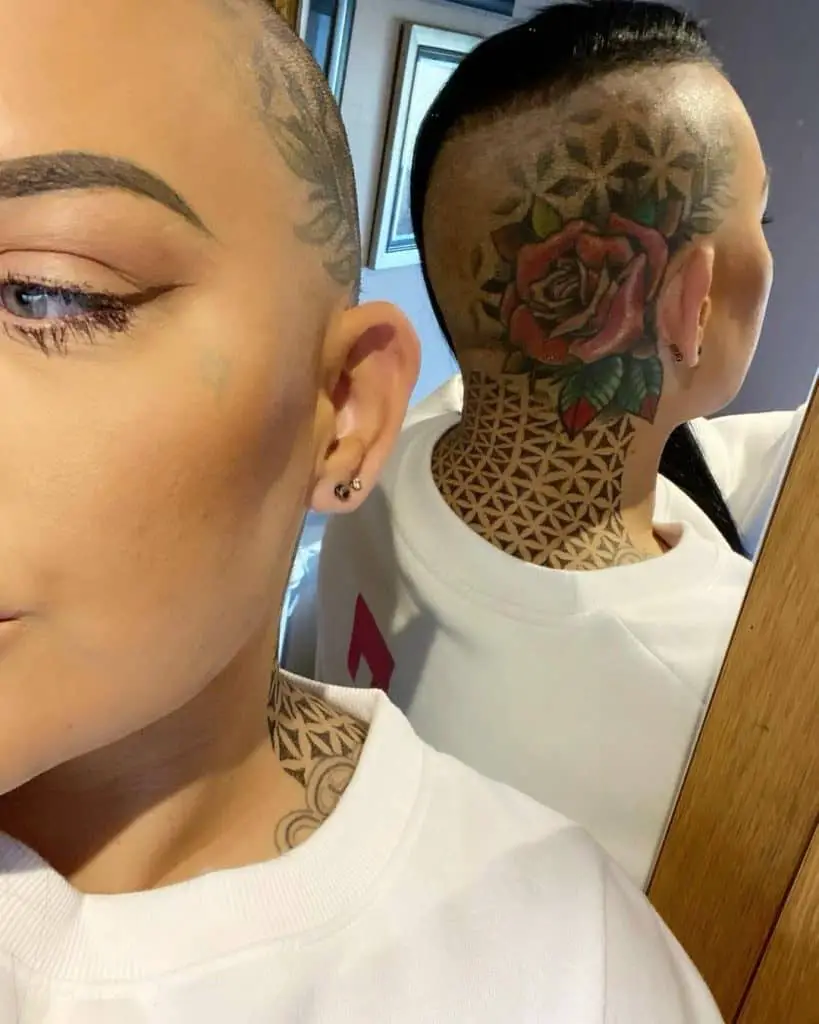
If you want to be a total badass (or just create a list of placements to avoid at all costs), here are some high-pain placements:
- Skull/scalp (the most painful placement),
- Ankle bone,
- Knees,
- Ribs,
- Face,
- Inner arms,
For a helpful chart that shows you where tattoos hurt the most, check out our Tattoo Pain Chart.
Before You Get a Tattoo…
By now, your head is probably buzzing with ideas. But before you jump to the first tattoo parlor you find, there are a few things to think about.
Choosing a Tattoo Artist
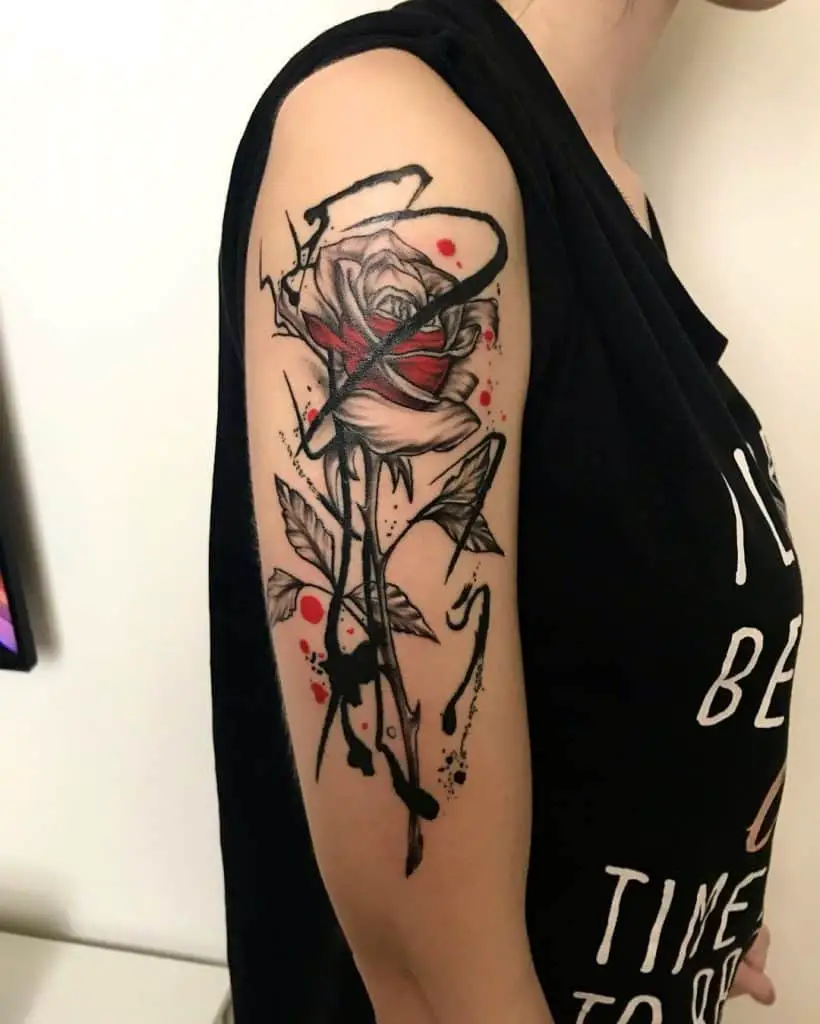
Here’s what to look for:
- Public profile that shows who/what they are,
- A clear niche that they’re good at (e.g. American traditional tatts),
- Portfolio of work – check their Instagram,
- Positive reviews from customers online,
- Clear prices and transparency about how they work,
- A clean and tidy set-up that puts hygiene first.
To start, make a list of artists who can tattoo the style you want. Then work out your budget and work through your list until you find the artist that meets all your requirements for the right price.
Read More:
- 14 Best Cover-Up Tattoo Artists. Find The US Top Tattooers
- 20 Best Geometry Tattoo Artists Around the World
- 20 Best Geometry Tattoo Artists Around the World
3 Things to Do the Night Before
Once you’re all set up, you’ve paid for the tattoo, and your session is booked, there are only a few things left to do.
- Avoid alcohol and any drugs that thin your blood, like aspirin,
- Stay hydrated, so drink plenty of water,
- Protect your skin from sunburn and moisturize it a few days in advance (but not directly before the session),
- Keep your blood sugar levels steady, so eat regularly and healthily.
Your tattoo artist should give you clear instructions on what to do on the days leading up to your first session. When it’s time to head to the parlor, wear loose clothes that will cover the fresh tatt from sunlight but won’t cause friction.
For more tips and tricks to prep well and avoid excess pain, read our guide to Tattoo Pain Management.
Tattoo Etiquette
There are some things you should be aware of when you work with a tattoo artist:
- Book an appointment, don’t just show up and expect miracles,
- Your tattoo artist is an artist so expect and encourage their input on the design (be polite if you don’t like their ideas too),
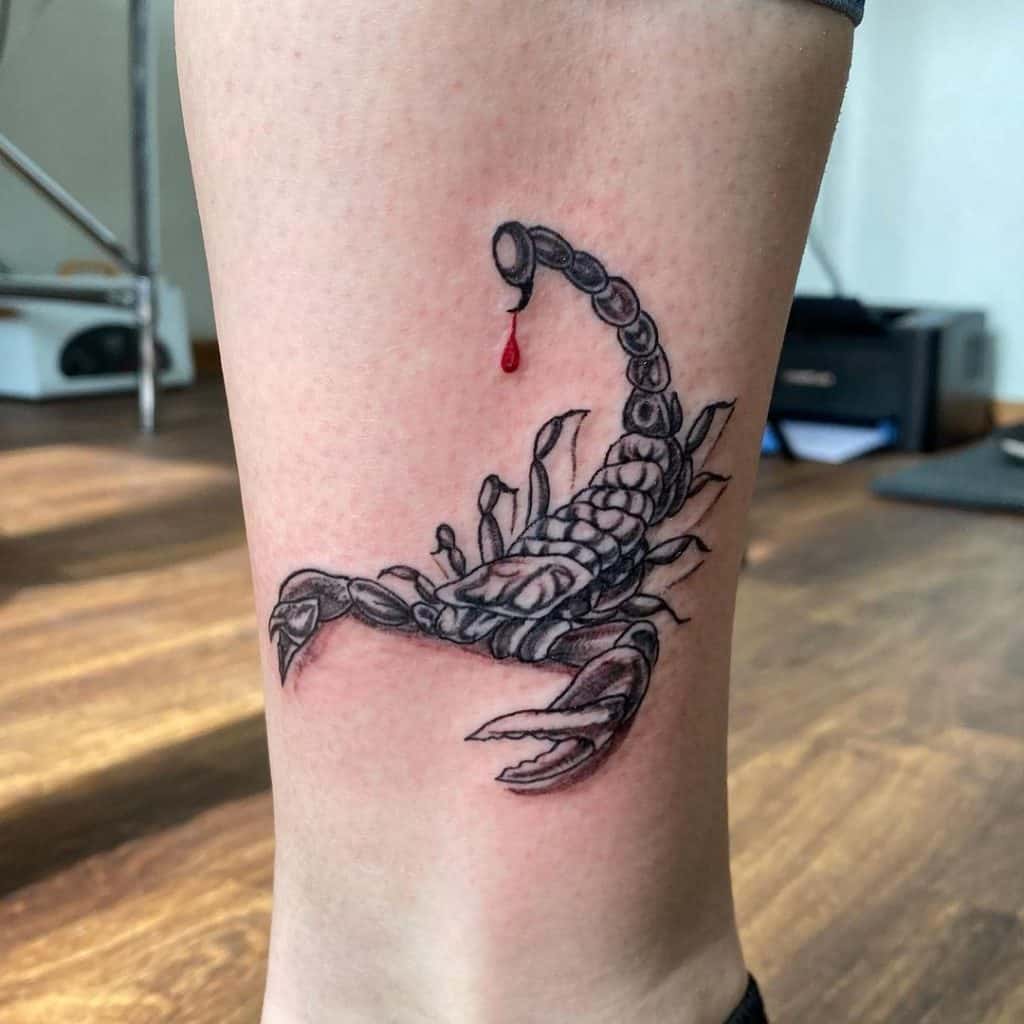
- Tell your tattoo artist if you have any medical conditions or take medication,
- Don’t ignore their advice on alcohol/drugs before getting a tatt or they’ll cancel the session,
- Ask plenty of questions about prep, the process and aftercare BEFORE your first session,
- Your tattoo artist needs space and quiet to work, so don’t pester them while they’re inking you (and don’t bring a hoard of friends to watch),
- Talk with your tattoo artist about what you can afford and get an overall cost for that tatt before you begin – make sure you’re on the same page when it comes to payment,
- You can tip your tattoo artist an appropriate amount based on how much you love the tattoo and the size of the project.
After You Get a Tattoo…
Once you’ve got a tattoo, you need to look after it. It’s a work of art, after all! That means following the advice that the tattoo artist gives you.
Also Read:
The Days After Your Tattoo Session
This usually involves gently cleaning the tattoo, protecting it from sunlight, and going through the scabbing phase.
Don’t be alarmed when your tattoo weeps! What you need to do is be very gentle, and always keep your hands clean when you’re about to touch the tatt. You’ll be directed to use a light anti-bacterial soap and warm water to clean the area, then pat or air dry the ink.
You’ll also need a tattoo ointment to apply, like tattoo goo. Often your tattoo artist will sell you this or provide it alongside the tattoo when you finish up the last session.
Long-Term Tattoo Care
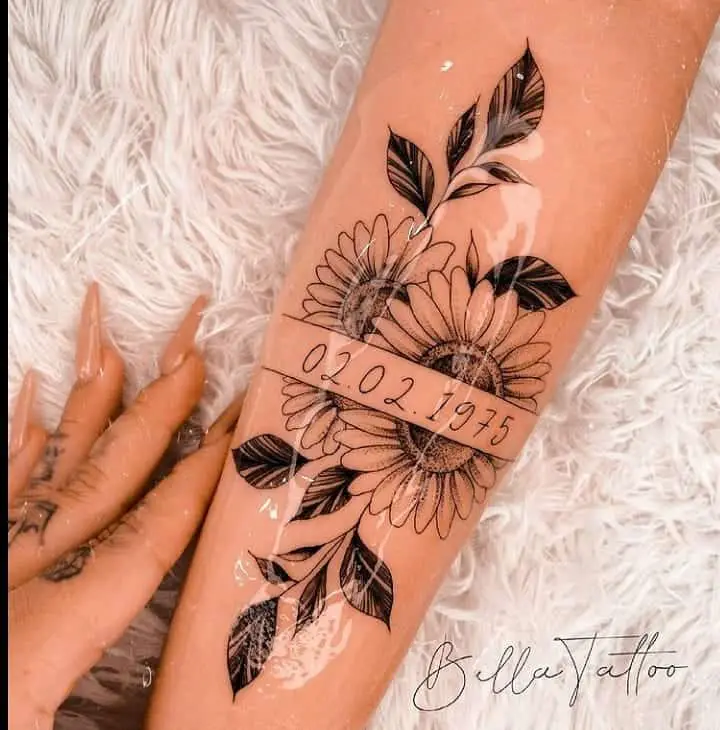
Once you’ve passed first 48 hours, you then enter a scabbing and itching phase. Keep strong and don’t pick at the scabs!
This itching can a month a longer, as the tattoo heals. Even though the surface of the tatt might look healed, underneath it’s still healing (which is why it itches). Instead of scratching, you can pat the area lightly, add more moisturizer, or cover it with a cool damp cloth to smother the itches.
The key with tattoos is to moisturize them regularly.
Do Tattoos Fade?

Over time, tattoos can fade and blur. Black ink turns to blue and you lose definition. If your tattoo is regularly exposed to the sun, it will fade even faster. That’s why we recommend applying sun lotion whenever your tatt is exposed to daylight. Oh, and keep moisturizing!
Don’t forget, you can always book “touch-up” sessions with your tattoo artist. They’ll be able to fix any mistakes, sharpen the design again, or cover it up completely if you change your mind about the tatt.
If you are worrying about what the tattoo will look like when you’re old and wrinkly, perhaps tattoos aren’t right for you. Even in old age, many people with tattoos remain proud and happy with their designs. Sure, the tattoos might not look as great as when they were first inked, but they will be an incredible reminder of happy memories and the life you have lived!
Read More: Do Tattoos Fade Over Time (And How Can You Fight Tattoo Fading?)
Tattoo Removal
Tattoo removal is possible, but just like the original tattoo process, it hurts and it leaves a mark.
How Can You Remove a Tattoo?
To remove a tattoo, you need to get rid of the ink in the dermis layer of your skin. This is usually done with a laser.
The laser applies very intense heat to your skin. It zaps your skin quickly and intensely to reach the dermis layer. As a result, the ink particles start to break up into smaller pieces. This allows the lymphatic system (vessels that work as part of your immune system to move fluids and particles, like ink, from your tissues to your blood stream) to remove the ink deposits. Once the ink reaches your blood, it is filtered out of your body naturally.
Does Tattoo Removal Hurt?
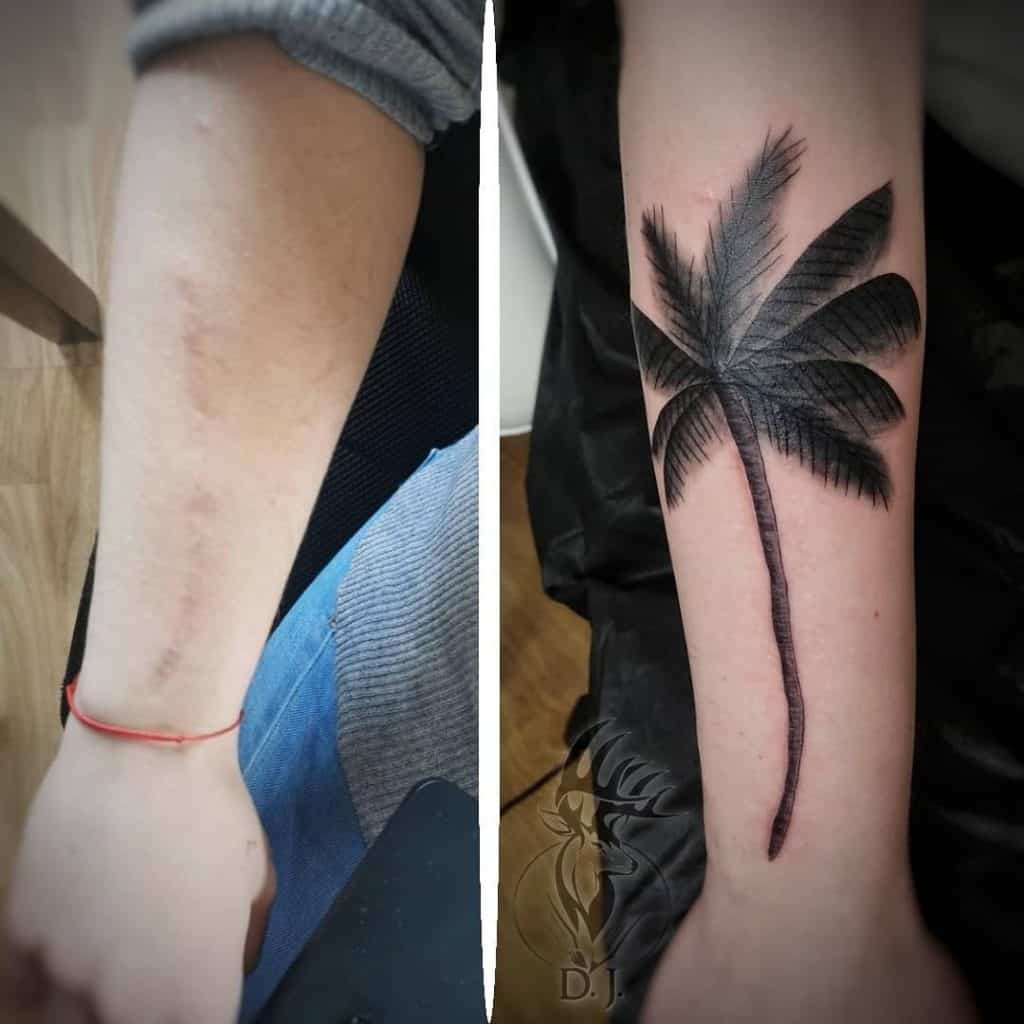
Oh yes. It really does hurt, especially if you have a very colorful tattoo that needs long sessions. Some colors, like yellow, blue and green, are particularly hard to remove. This is because these colors don’t absorb as much light from the laser as other colors, like red and black.
It feels like a brief flash of hot energy, almost like snapping a band against your skin. As you can image, it starts to feel quite sore after a while. Thankfully, the discomfort doesn’t last too long and once the process is over it doesn’t hurt at all.
Tattoo Removal Cost
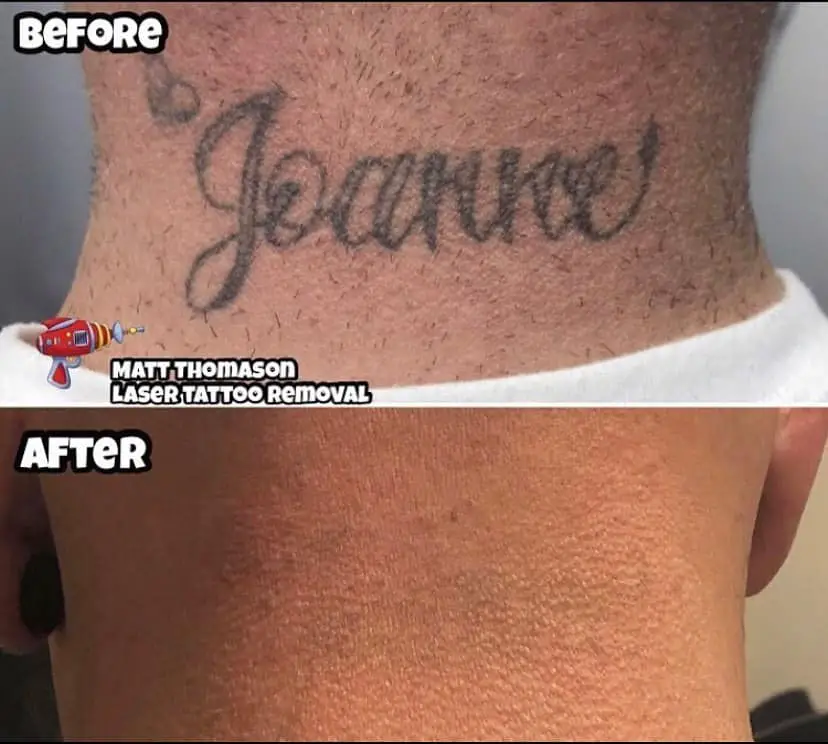
It’s not cheap! You’ll need multiple sessions to remove all the ink and sessions could cost thousands of dollars. Just like the cost of getting a tattoo, the more session and larger the tattoo is, the more it will cost.
Also Read: Is Laser Tattoo Removal Expensive? (And Other Removal Options)
DIY Tattoo Removal
One way to circumnavigate the costs is to buy your own laser tattoo removal machine. It’s not without risks, but it is possible to remove a tattoo this way.
Did you know that we have a guide to the Best Laser Tattoo Removal Machines?
Bear in mind that laser tattoo removal is generally considered the most efficient way to remove a tattoo. Tattoo removal creams and lotions are not recommended by professionals. In fact, the FDA has not approved any creams, ointments or lotions for tattoo removal. Their report warns that these products could cause unexpected allergic reactions and damage your natural skin pigmentation.
Also Read: Do Tattoo Removal Creams Work? Here’s Everything You Need To Know
Temporary Tattoos: Another Option
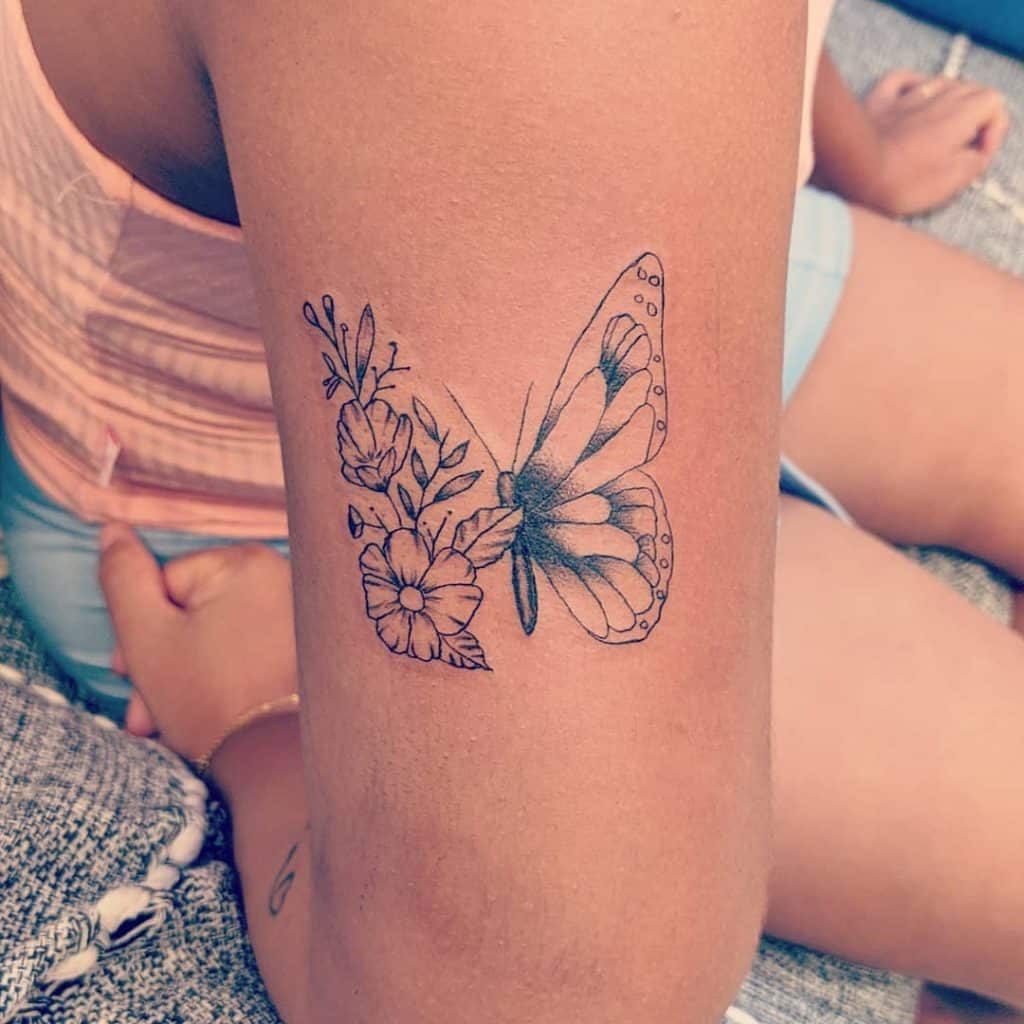
Temporary tattoos might seem like those silly stick-on tattoos made for kids, but they’re actually designed for adults to use only. Once applied, they’ll last up to a few weeks so you can really get an idea of what your tattoo will look like.
A temporary tattoo is a great idea if you want to trial what having a tattoo looks like… or you just want to appear badass for a special event or vacation.
The design is drawn onto a water-permeable paper sheet, then pressed onto your skin to transfer it. Unfortunately, this often means that paper temporary tattoos have very restricted designs and sizes.
If you want to draw your own temporary tattoo instead of buying a pre-made one, think about using henna paste. There are some drawbacks to henna and some important warnings about the ingredients, however. Read our article about the Best Temporary Tattoo to learn more.
First of all, get your social media up to date. There is a huge audience for tattoo artists who show-off their skills on social media!
- Create a Facebook page and link it up with your business,
- Launch an Instagram account for sharing your artwork,
- Get permission from your customers to photograph and share the tatts you do for them,
- Engage with the community – comment on pics of tatts you love, answer questions and give advice, etc.
Build up a following and people will naturally come to you when they need a tattoo. Whether you are just starting to draw and become an artist, or you already have an established tattoo shop but business is slow, social media is the place to start.
You might also want to consider getting a website for your portfolio!
Also Read: Henna Vs. Tattoo (Process Of Creating, Duration, Pain Level, Design Possibilities, Skin Impact)
The Best Tattoo Artists for Inspiration
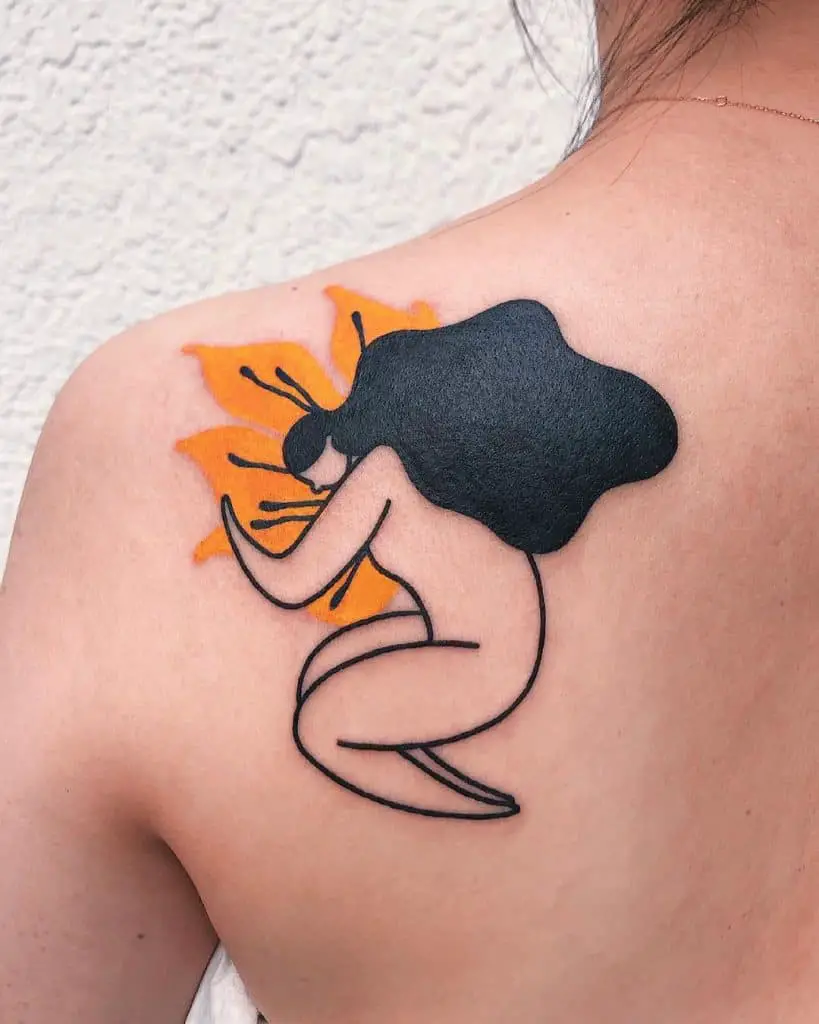
If you’re looking for an example of a tattoo artist on the rise in 2023, it has to be Pony Wave. She started her tattoo career in Russia before moving to LA. She now has almost 250k followers on Instagram!
Her feed is a great example to follow. It mixes some stunning examples of her hyper-realistic tattoo style, with personal photos of her day-to-day life. Her followers can get a sense of her skill and who she is as a person. It’s a winning combination.
For a comprehensive list of the artists to follow on Instagram, check out our guide to the Best Tattoo Artists.
How to Choose the Best Tattoo Pen Machine
Anyone can put pen to paper. Some people can draw well. Few people can draw amazingly. And only some people will turn them designs into tattoos.
To take that step, you’ll need a tattoo pen machine (also known as a tattoo gun). Thankfully, we’ve created a guide to tattoo pens so you can find the right model for you. Whether you’re looking for a beginner tattoo gun or a pro tattoo pen mode, check out our guide to the Best Tattoo Pen Machine.
Conclusion – Love Your Tattoo
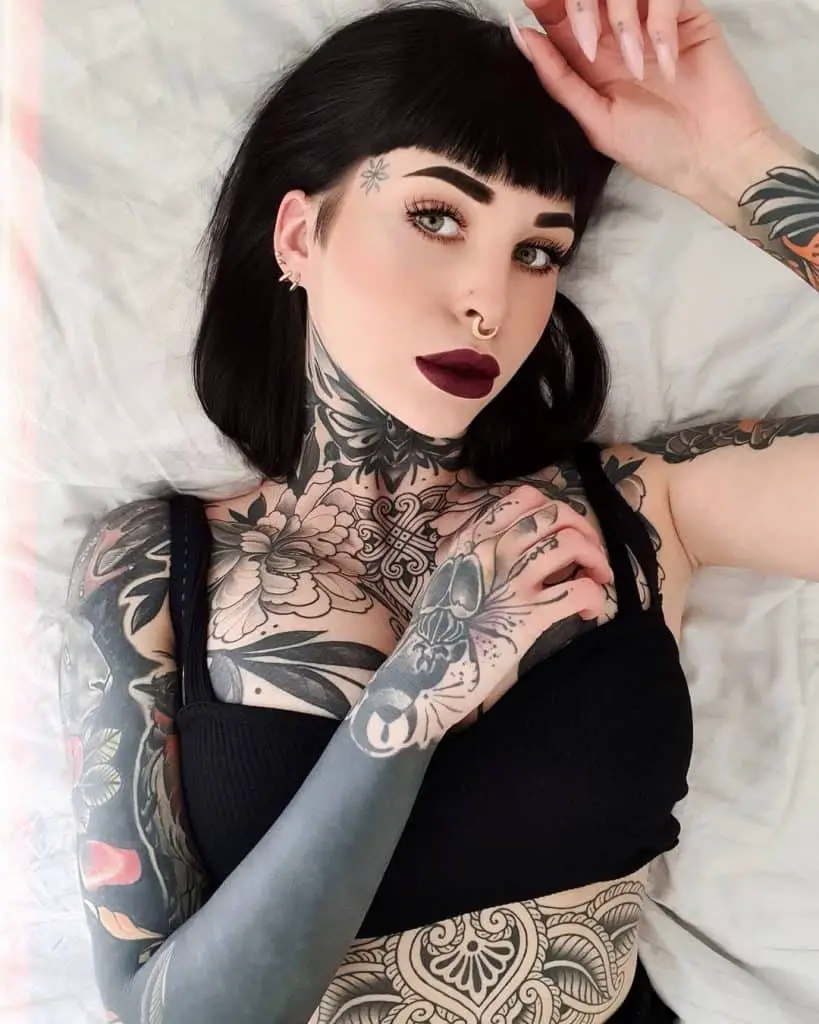
Above all, to be happy with your tattoo you need to be happy with your body and the design you pick. A tattoo is decorative, but it often has a deeper meaning. For a tattoo that you’ll love and stick with for life, think carefully before you get inked!
For more resources to help you find your dream tattoo and get inked safely, check out all our helpful guides and tips here at Saved Tattoo.
- Safe, non-toxic plant-based temporary tattoos made with 100% high-definition printing for a realistic look without the pain
- Easy to apply and remove - just stick for 20 seconds then take off
- Set includes 5 sheets with 17 fun, delicate designs like hearts, cats, smiles, suns, moons, and more
- Waterproof and long-lasting - stays on up to 2 weeks of wear
- Fashionable for women, men, girls and boys
- Place on arm, wrist, neck, leg, finger, waist, foot and more
- Great for parties, birthdays, and showing your unique style

